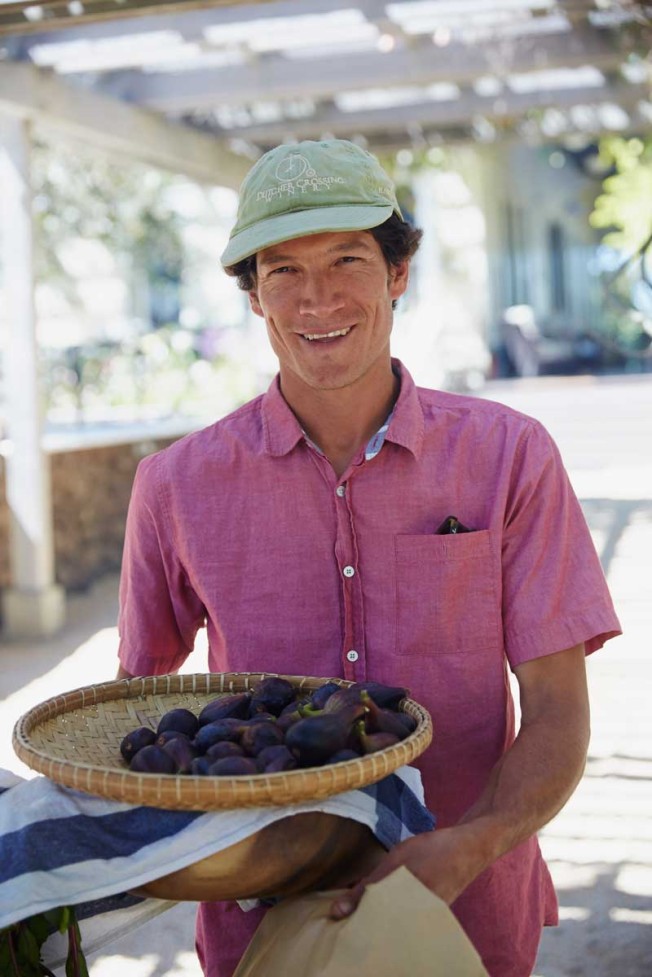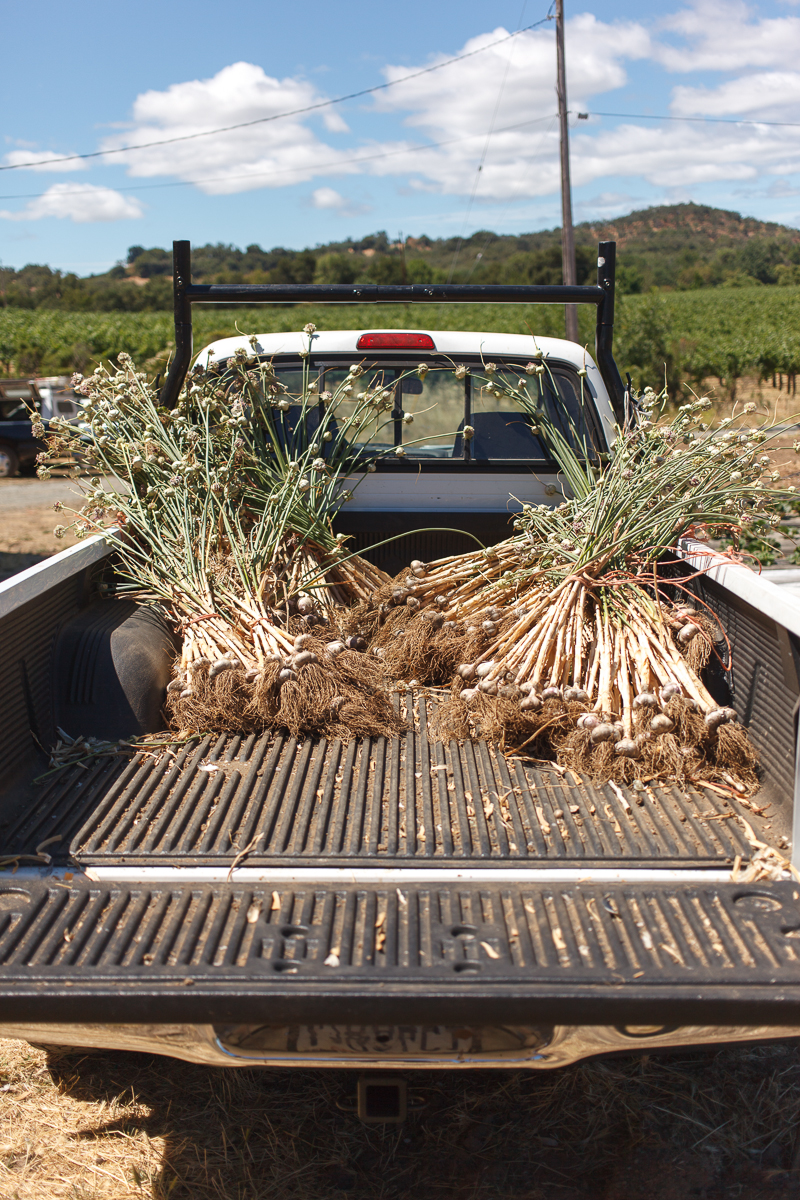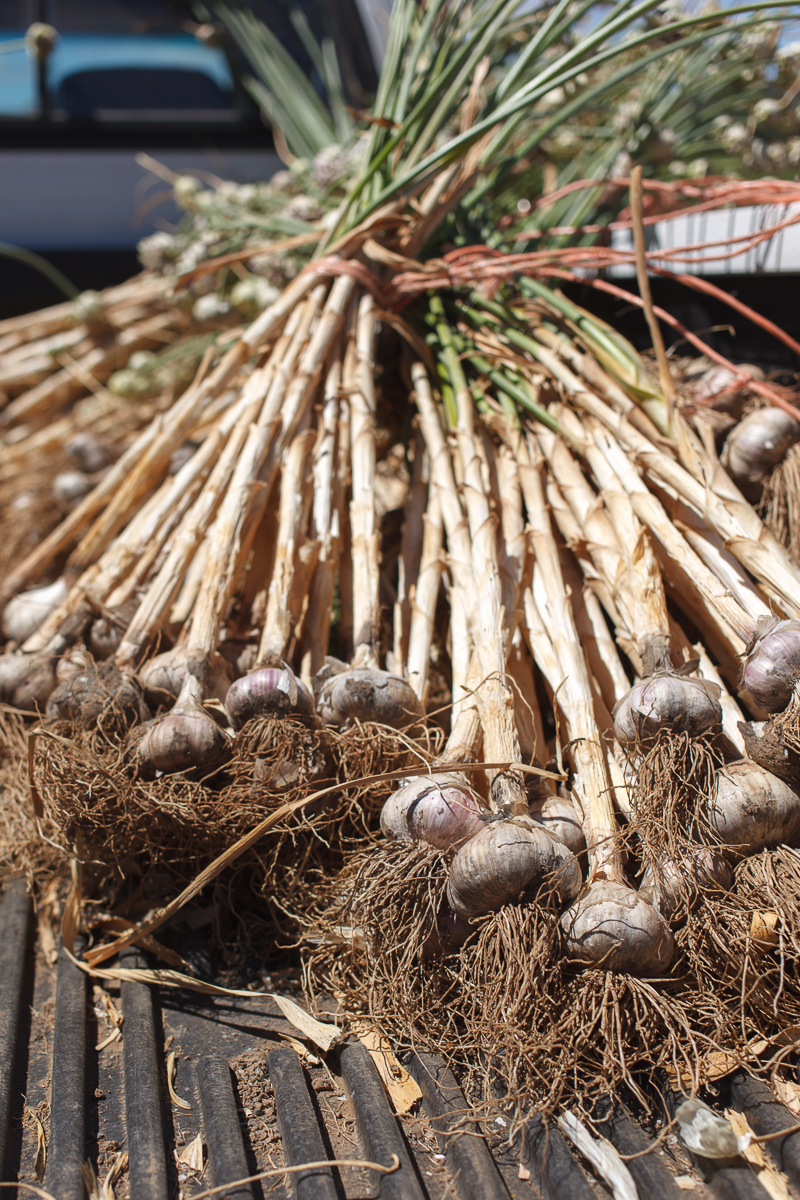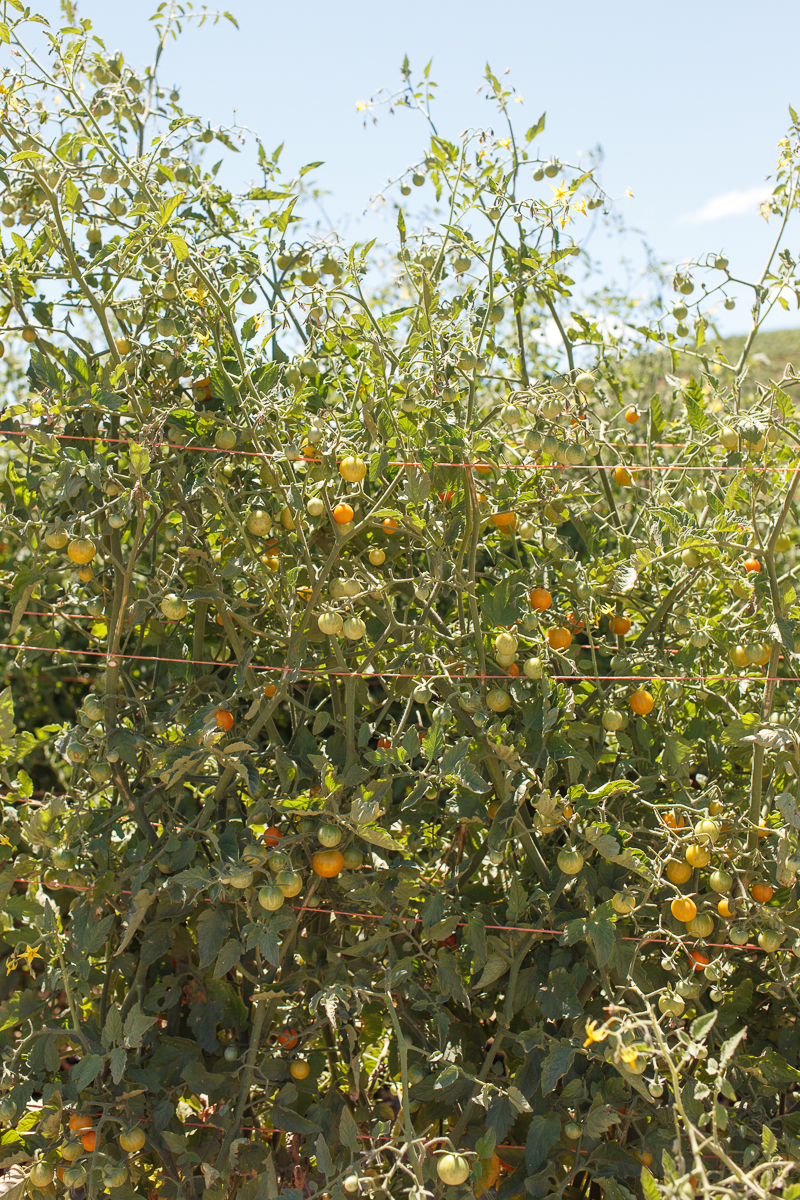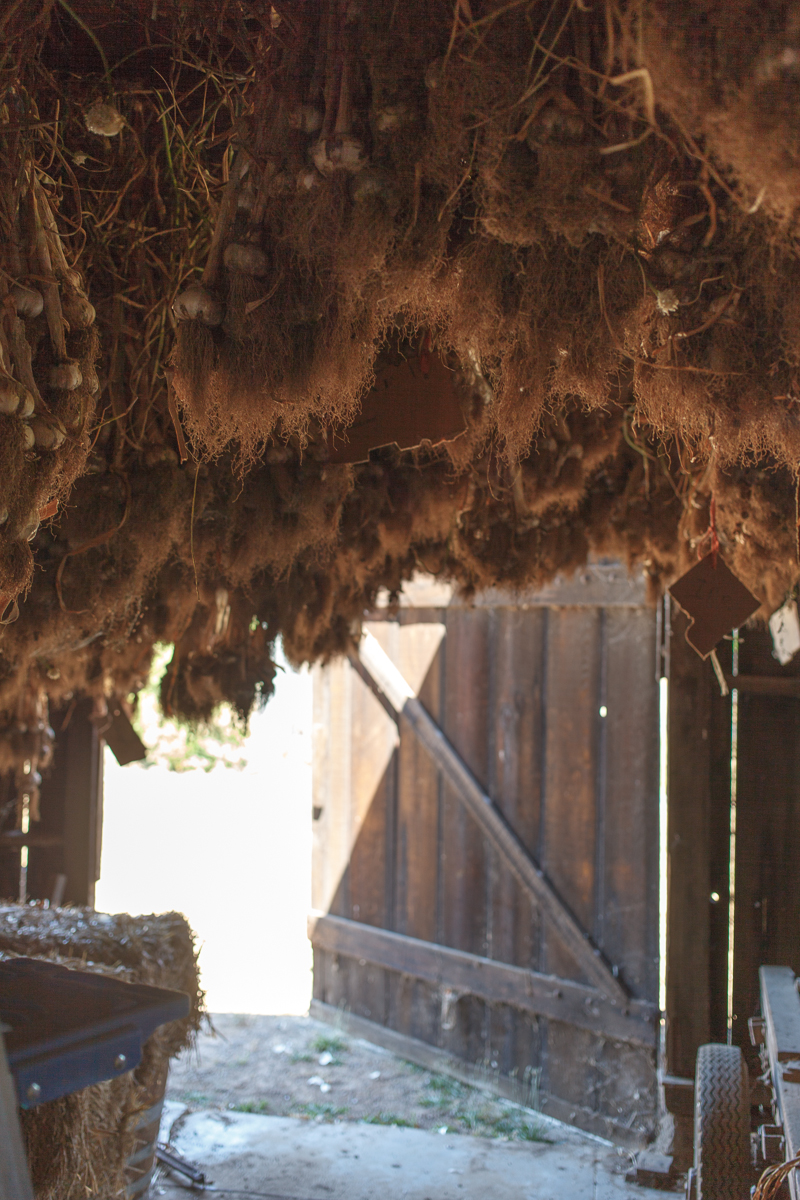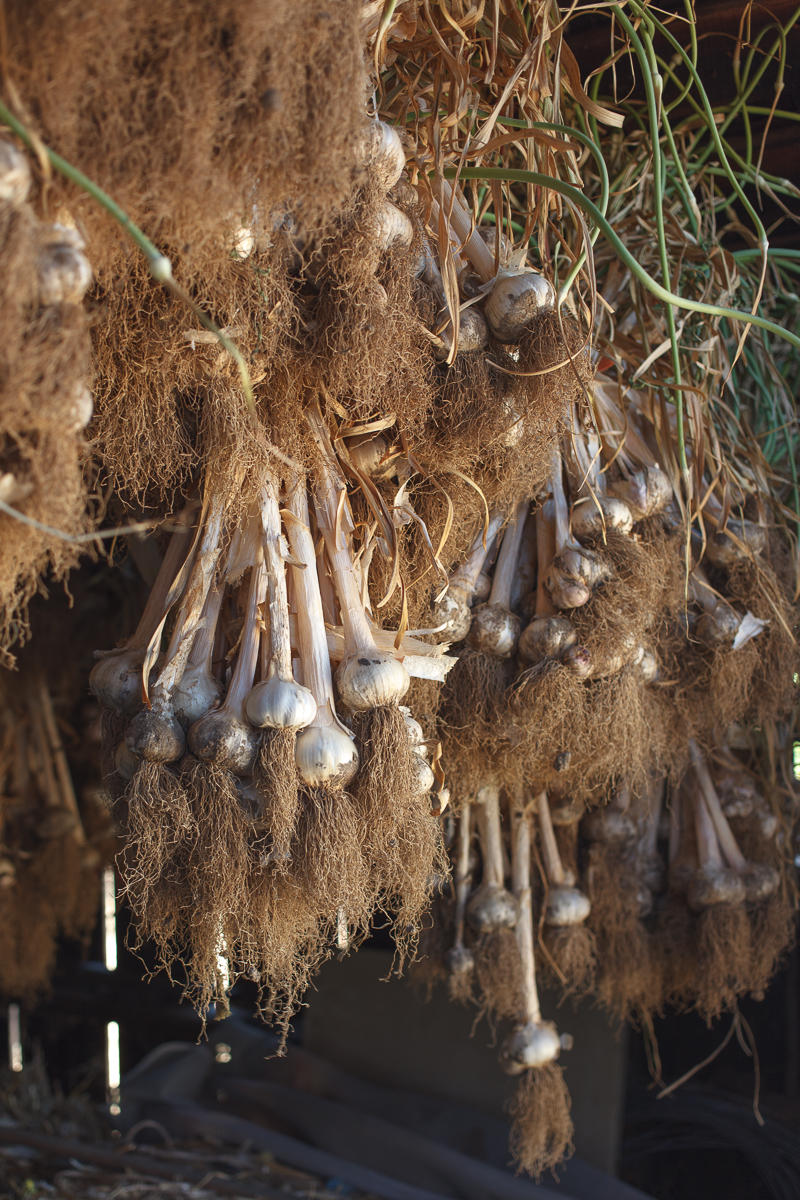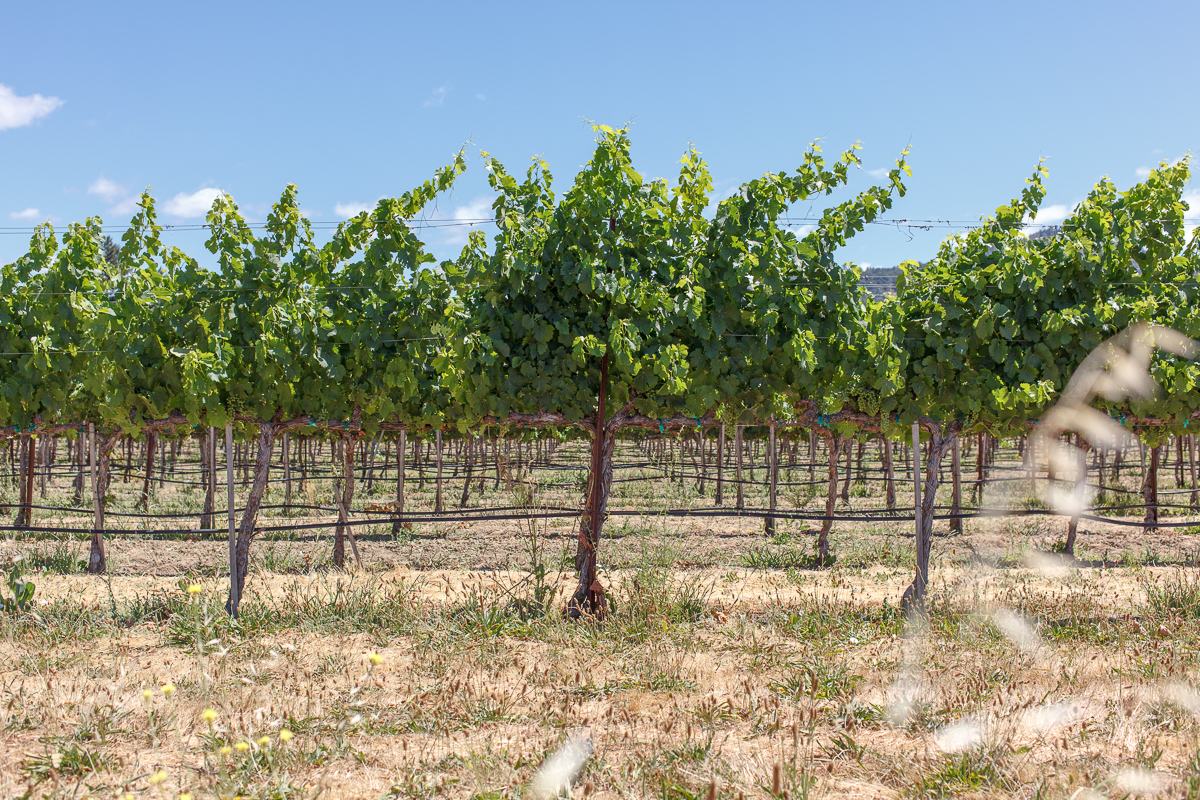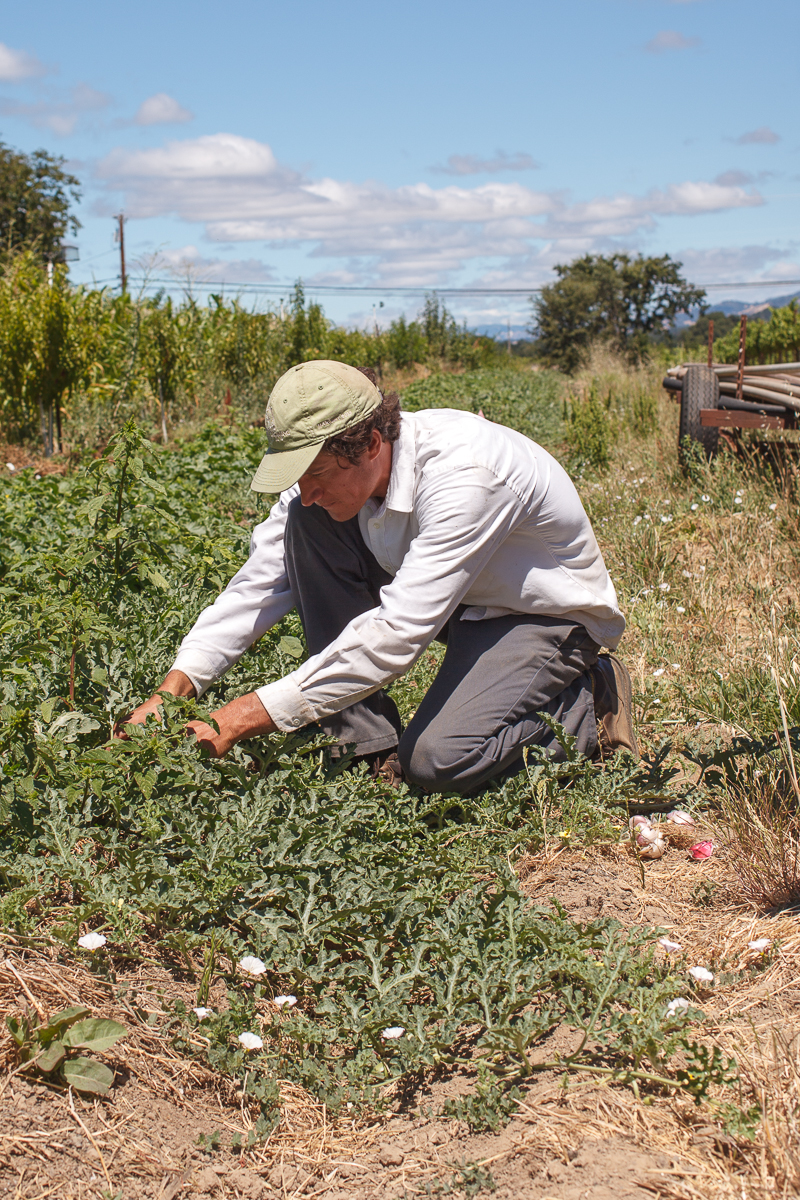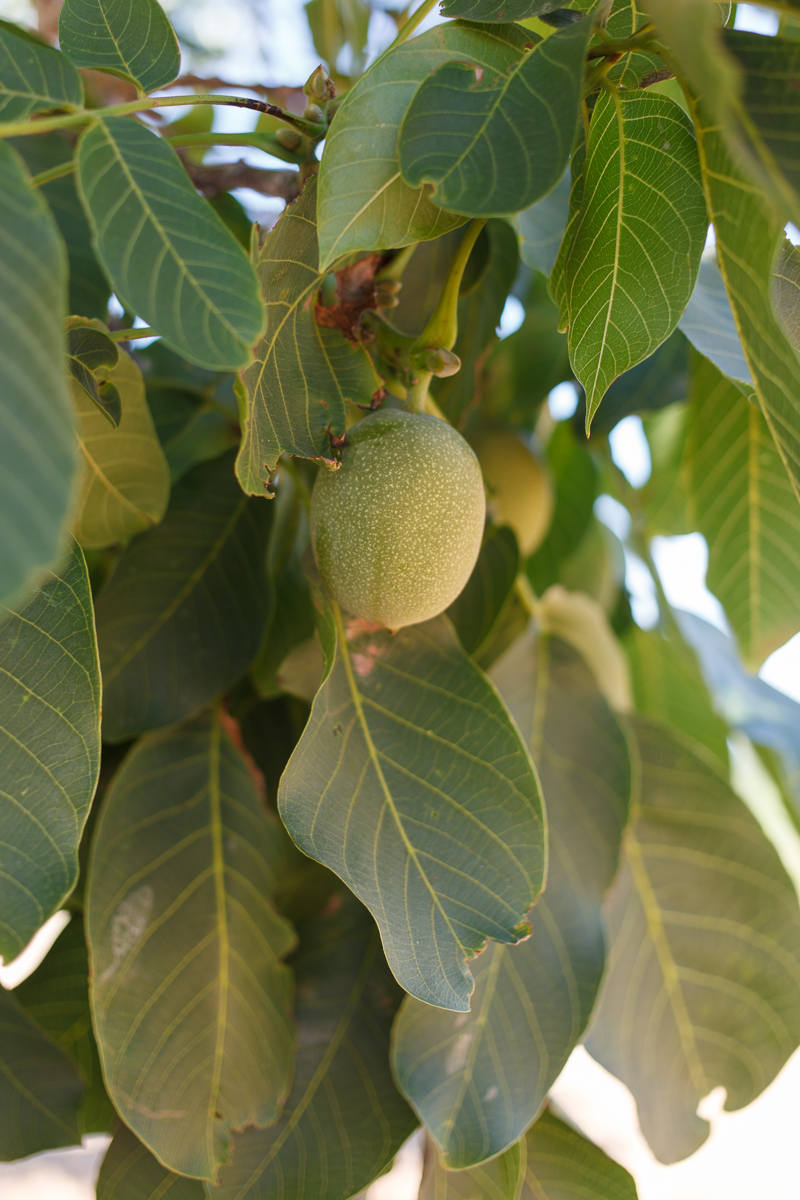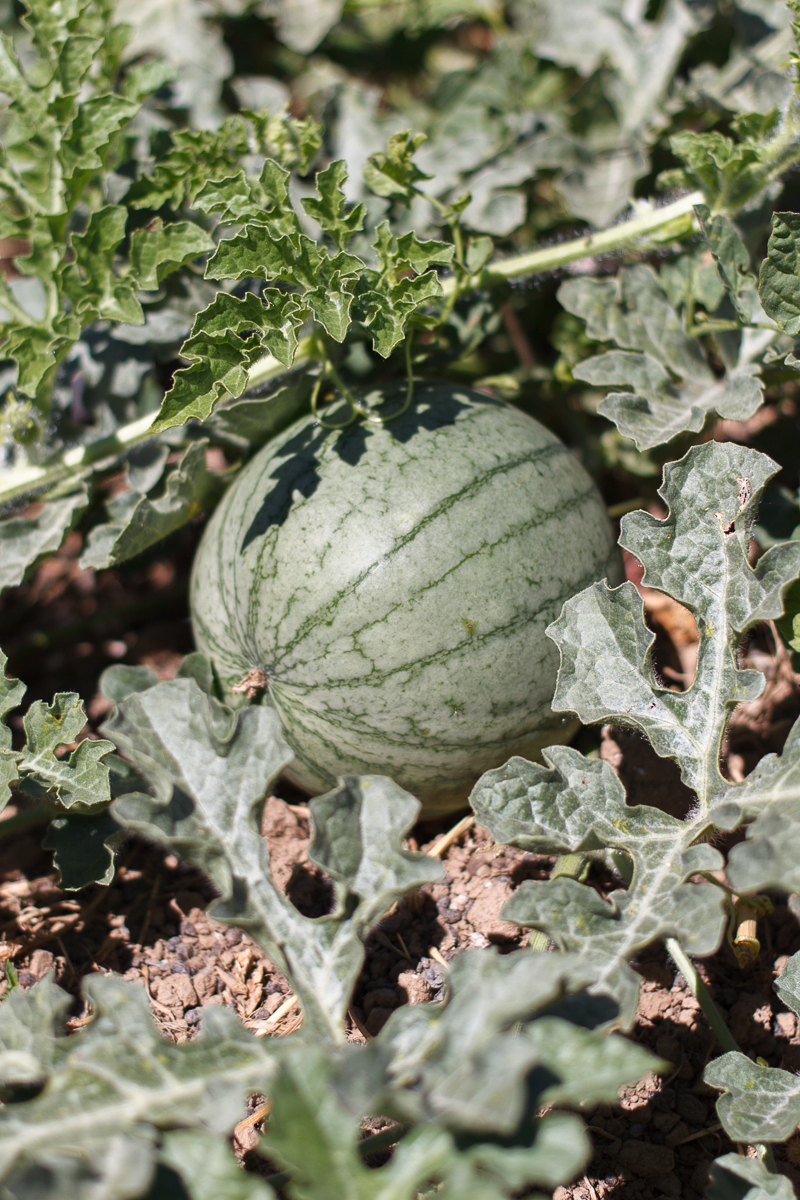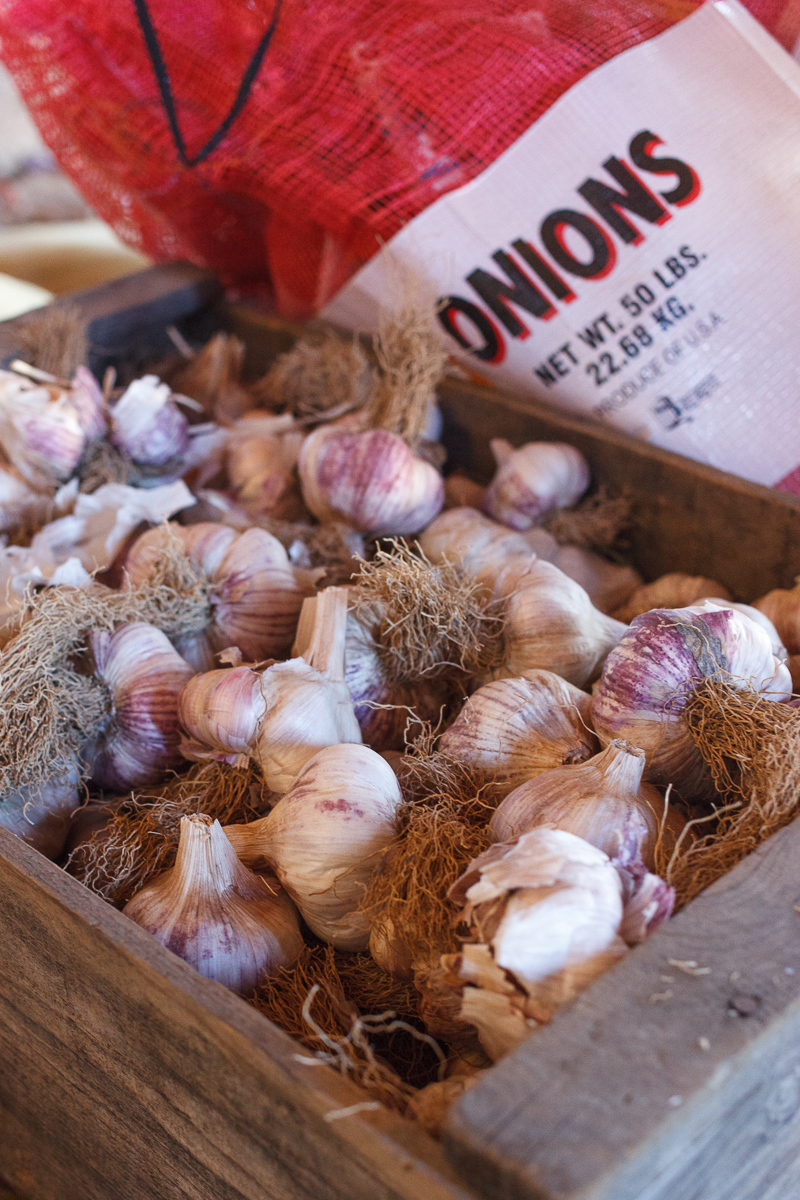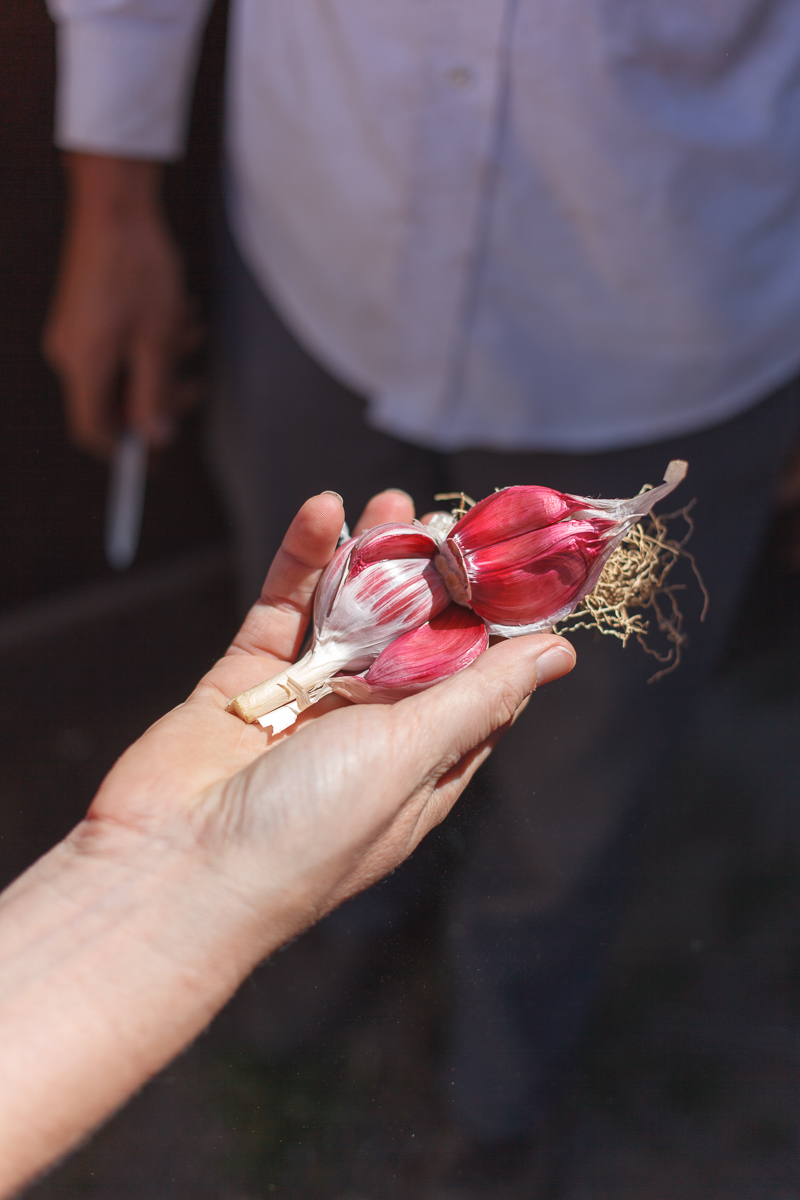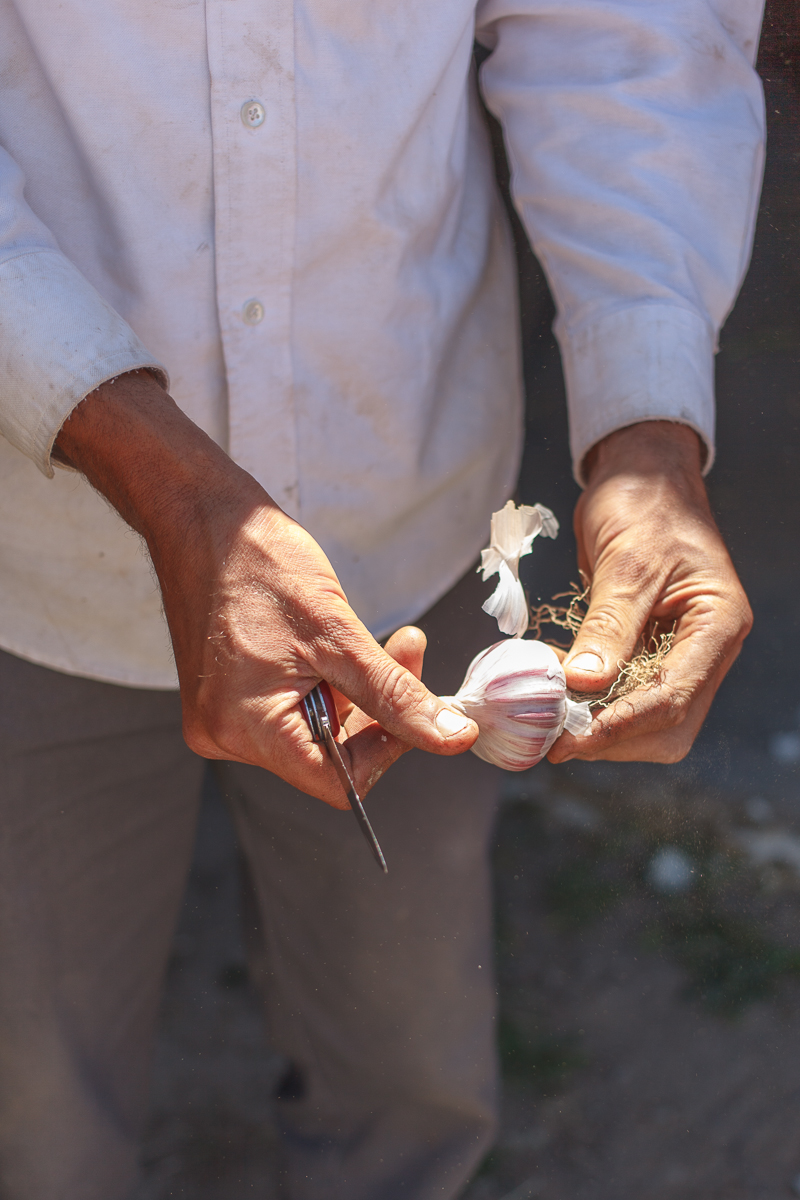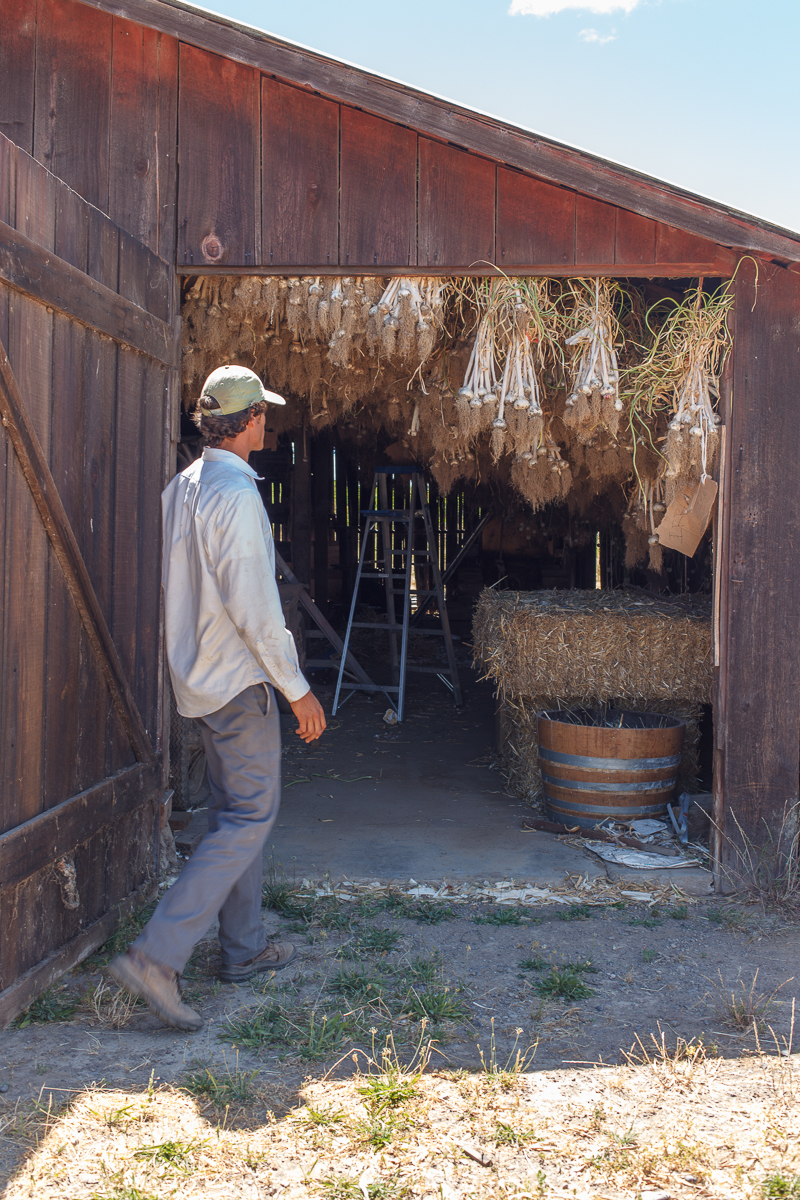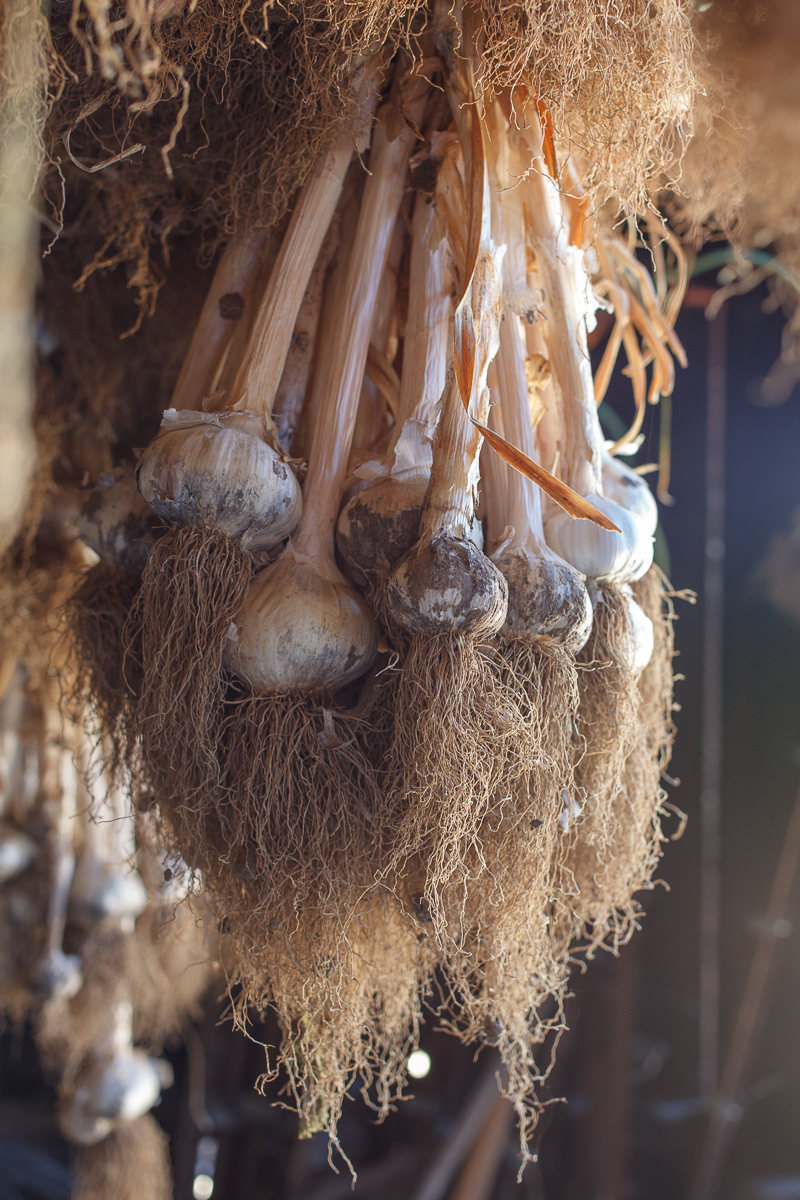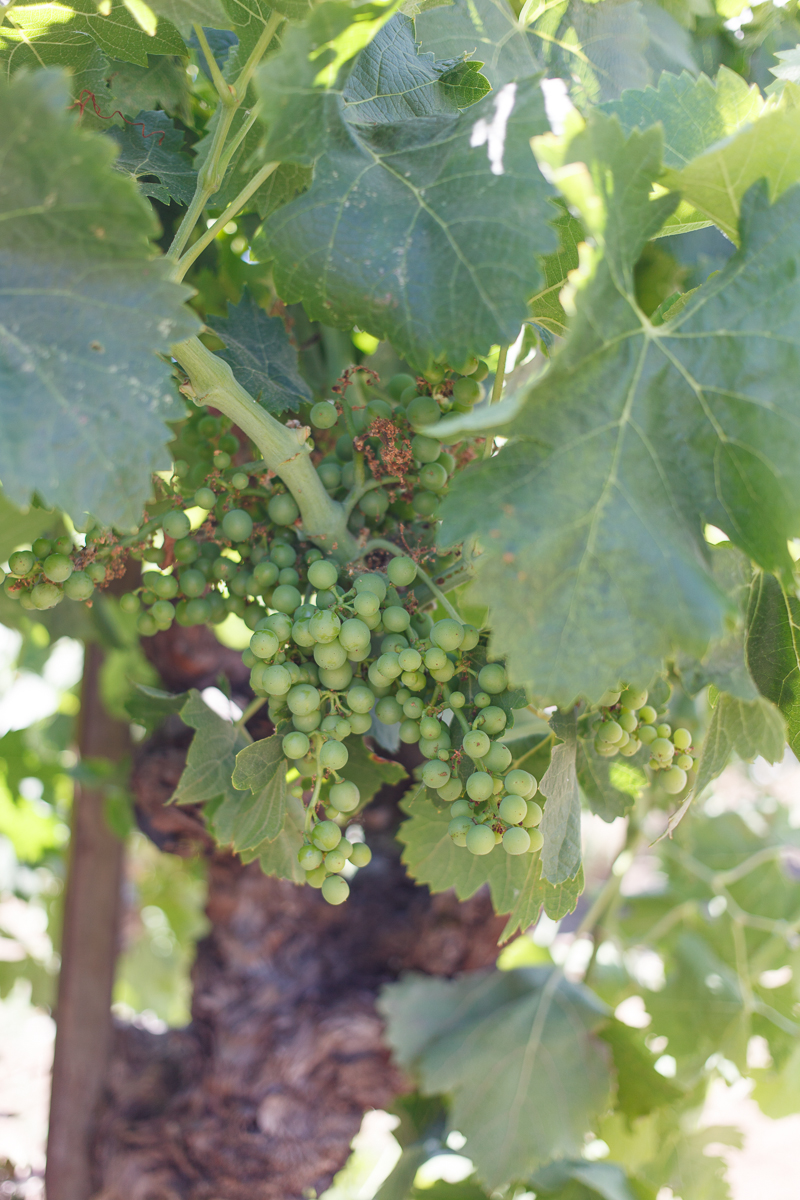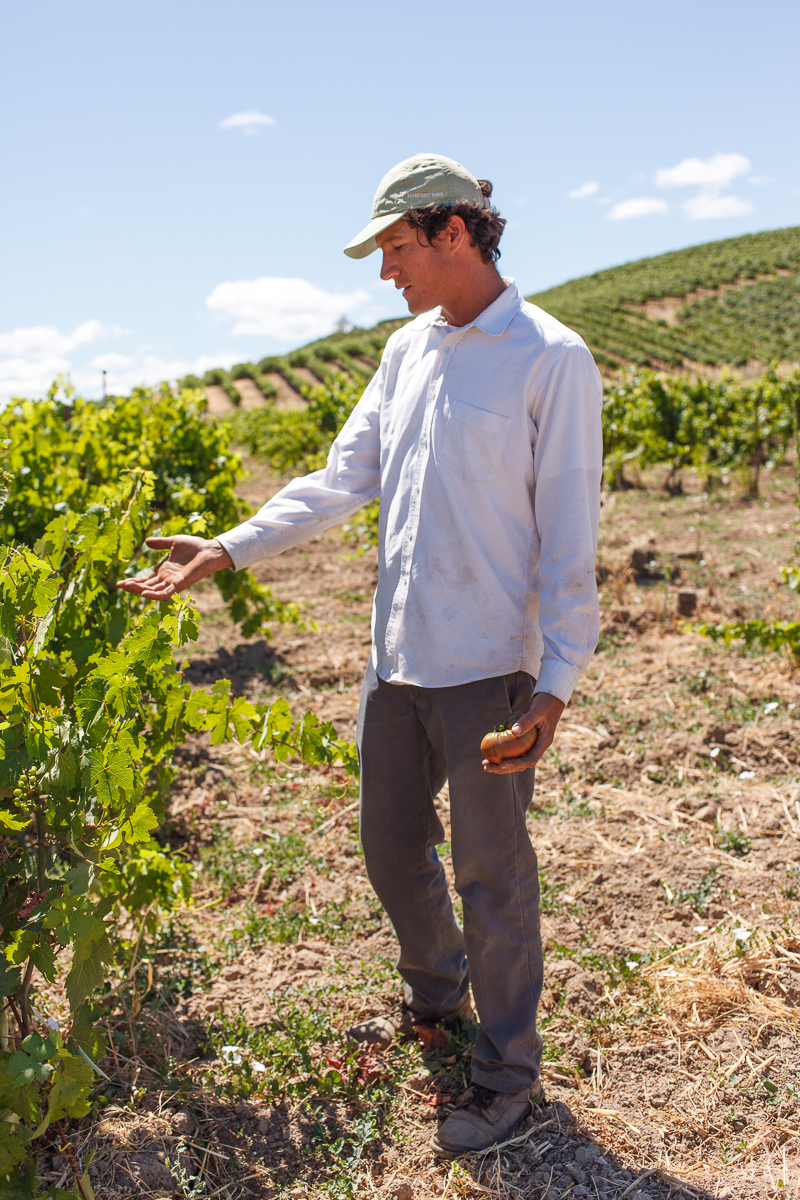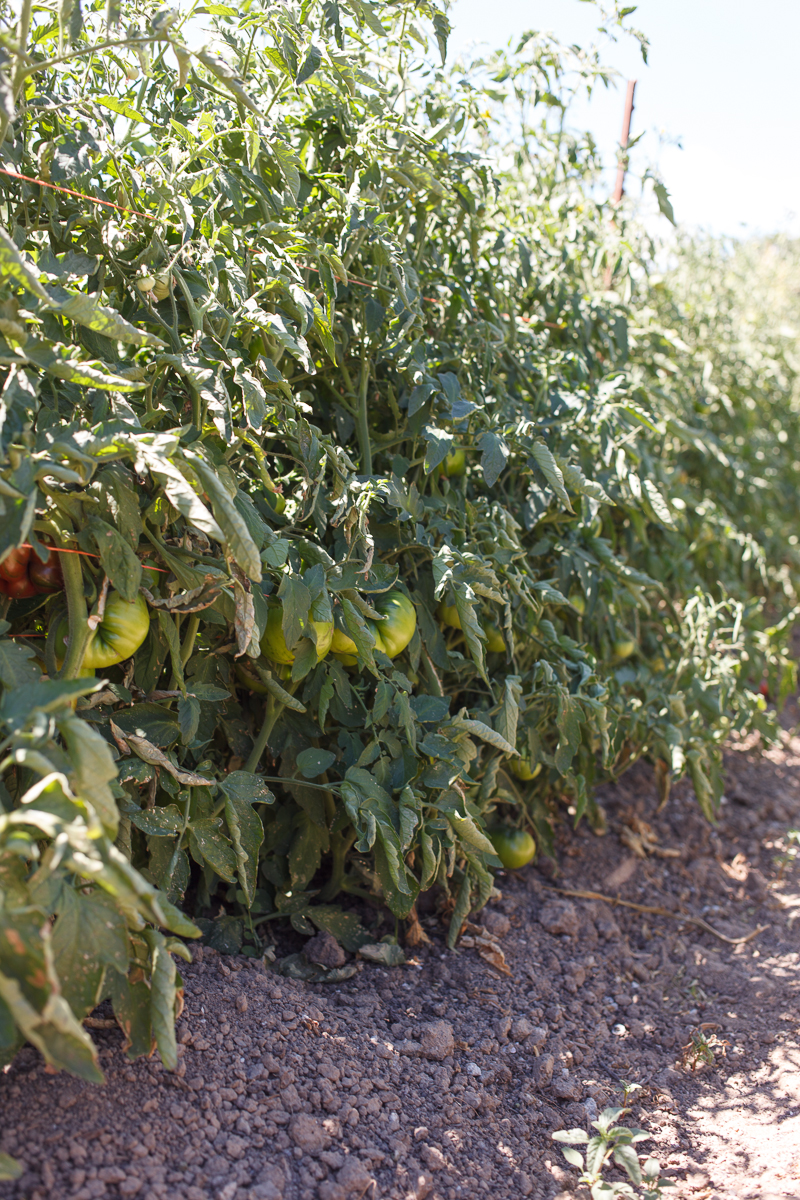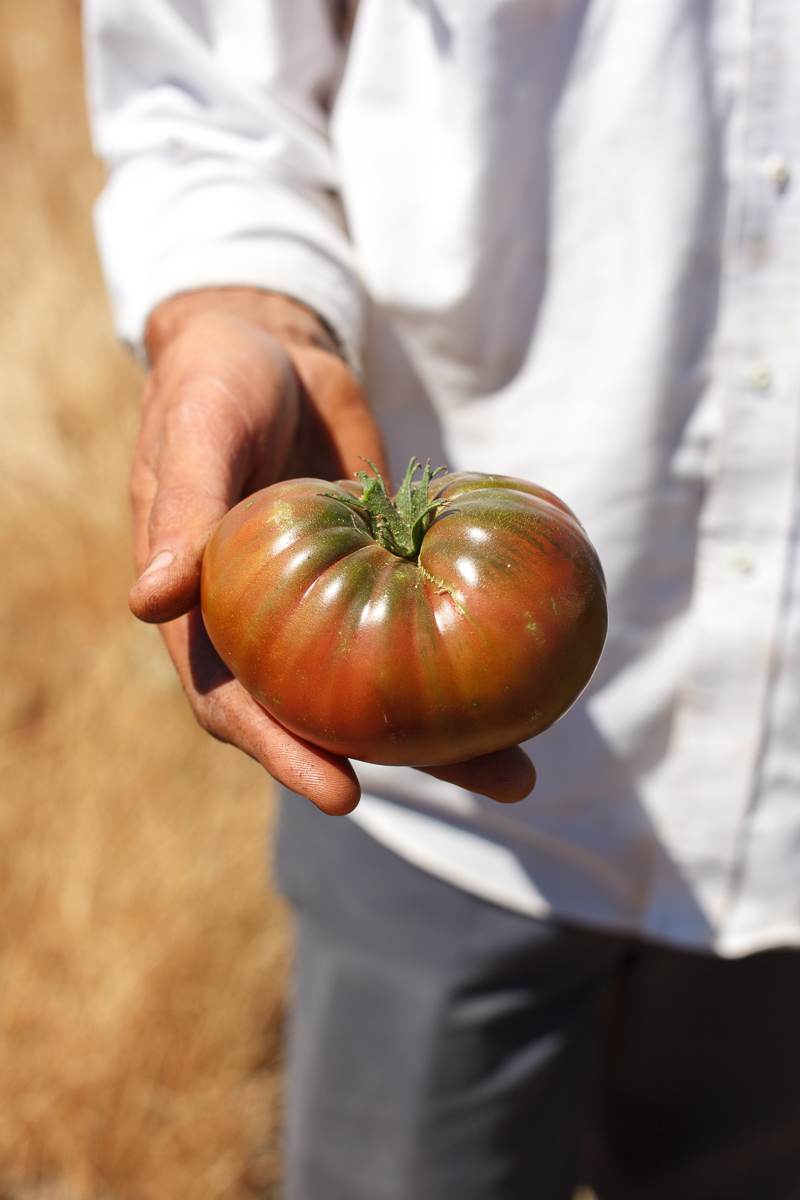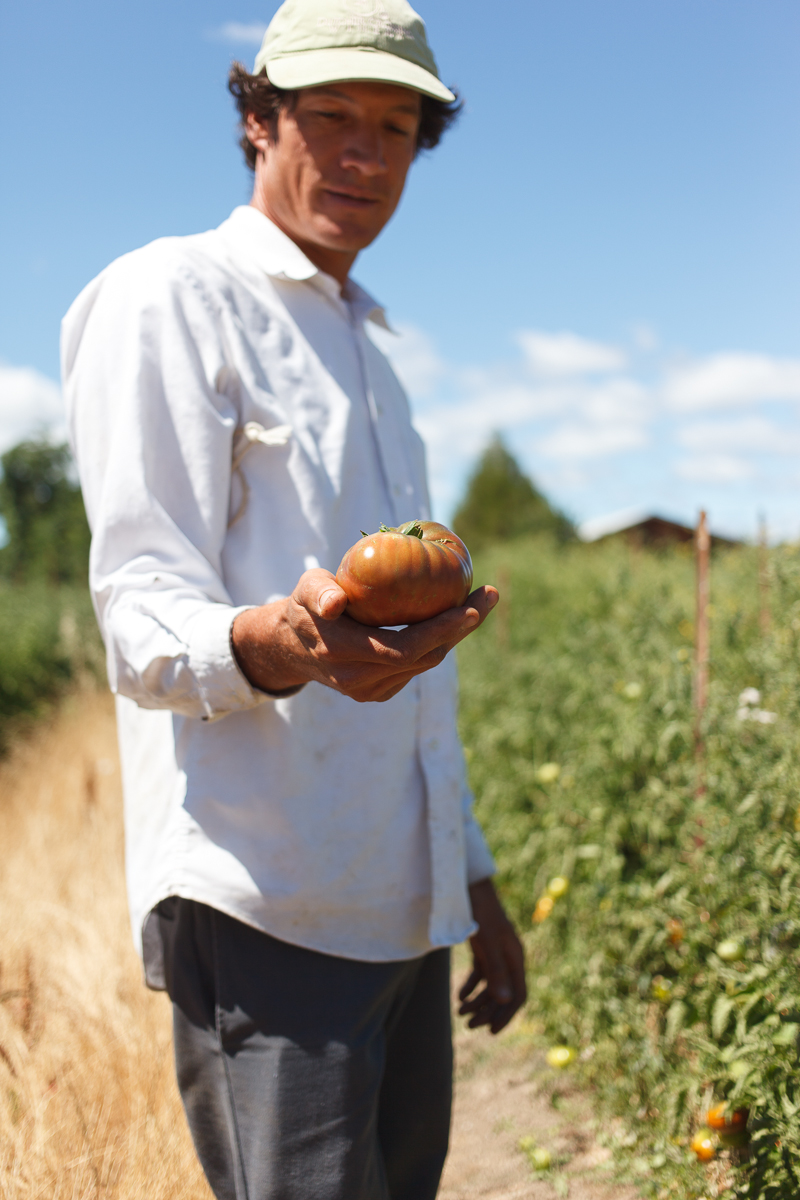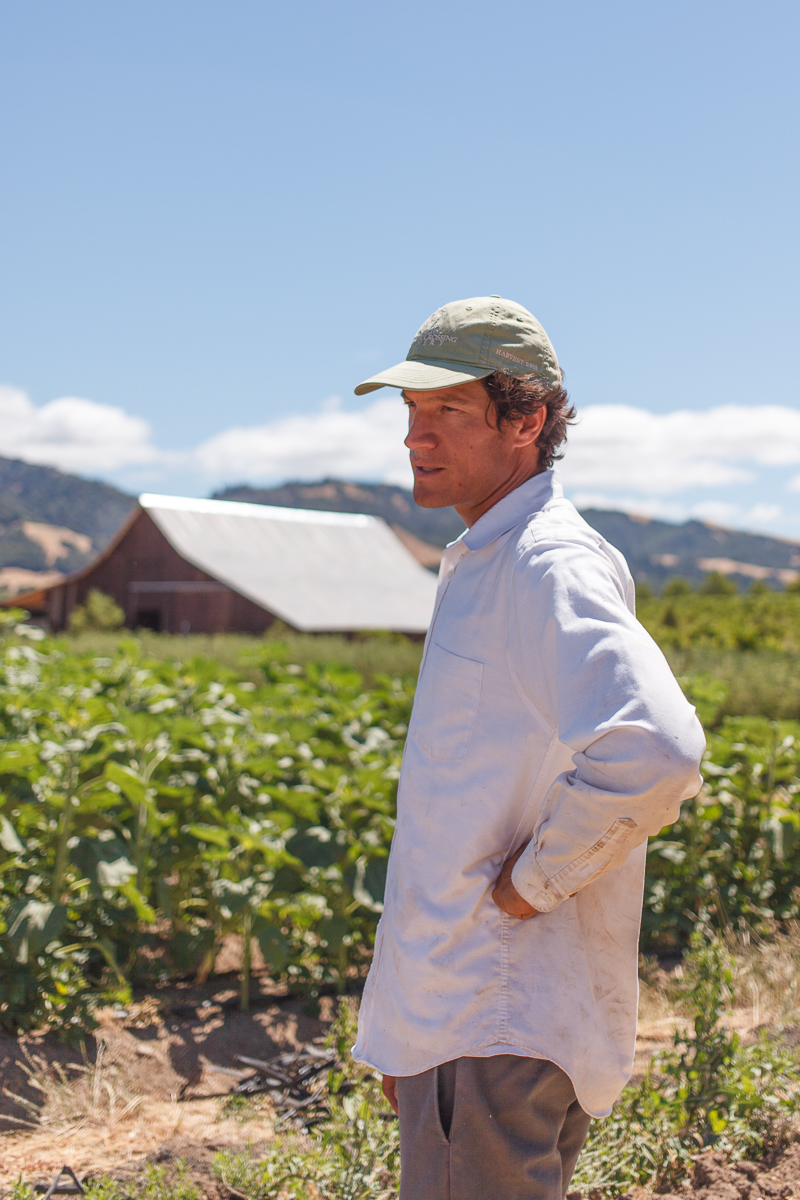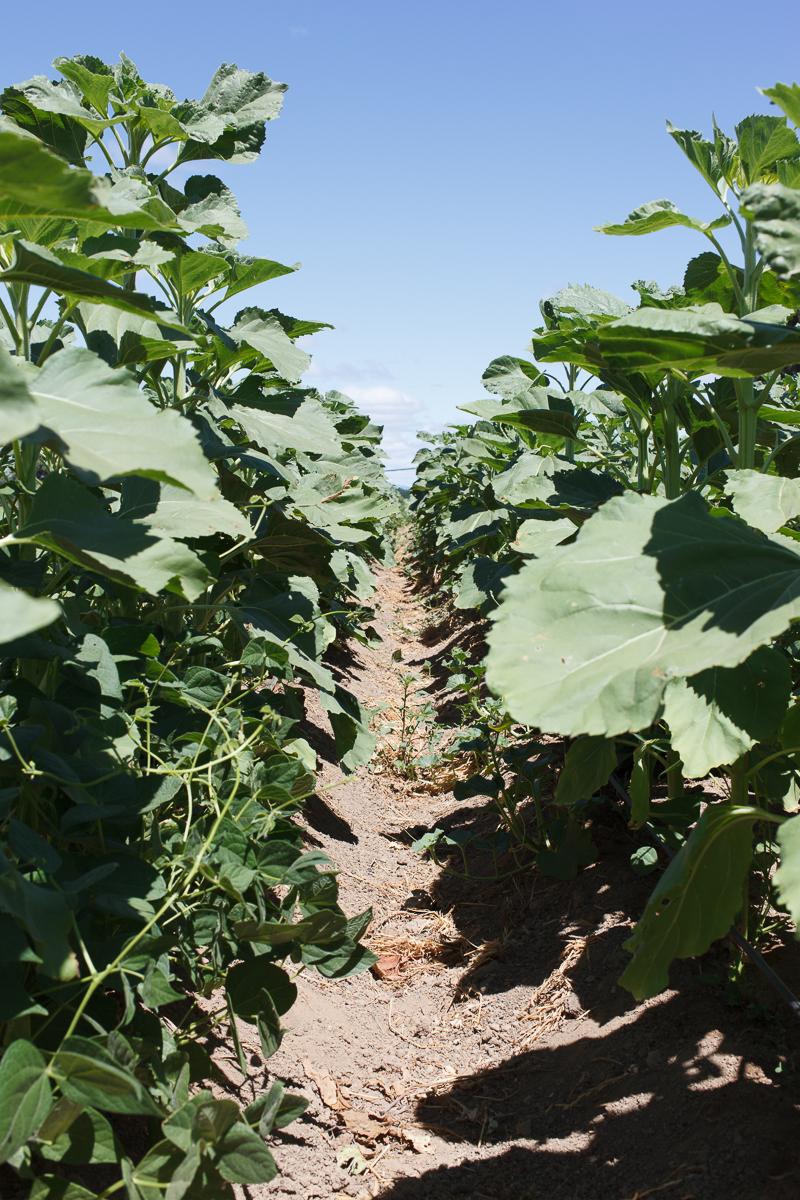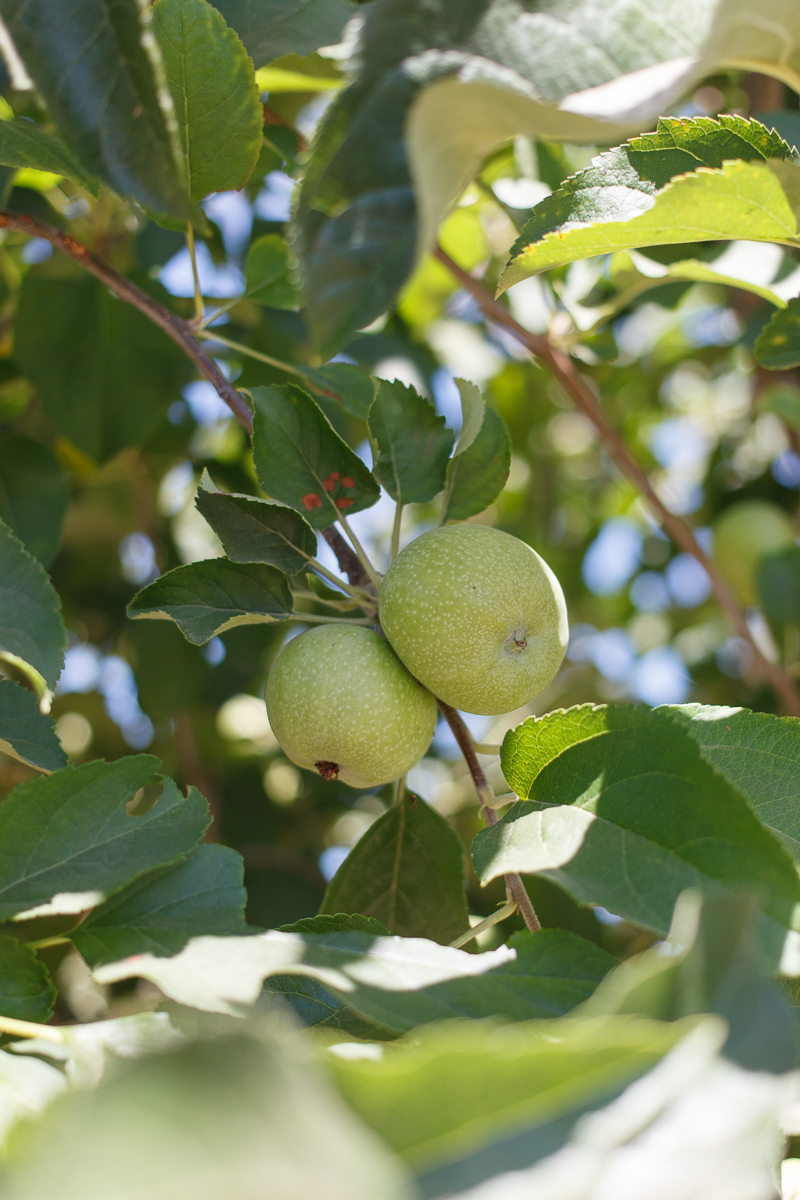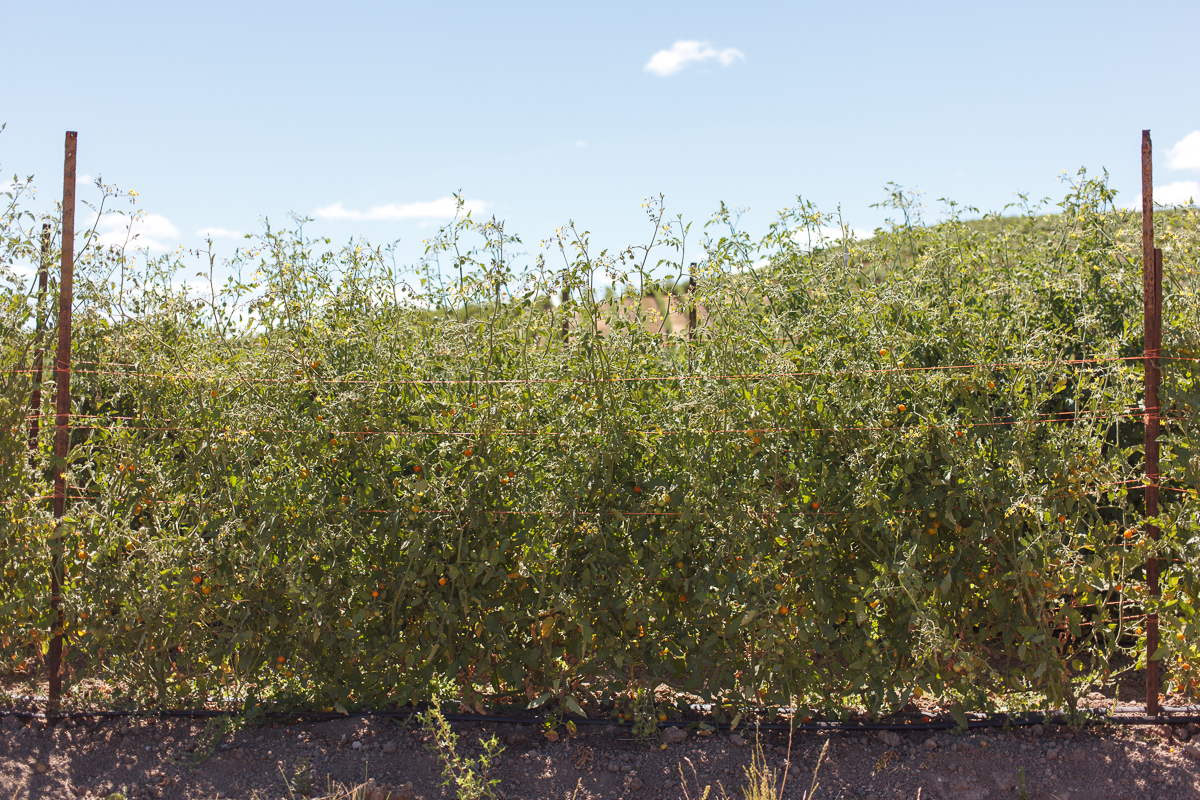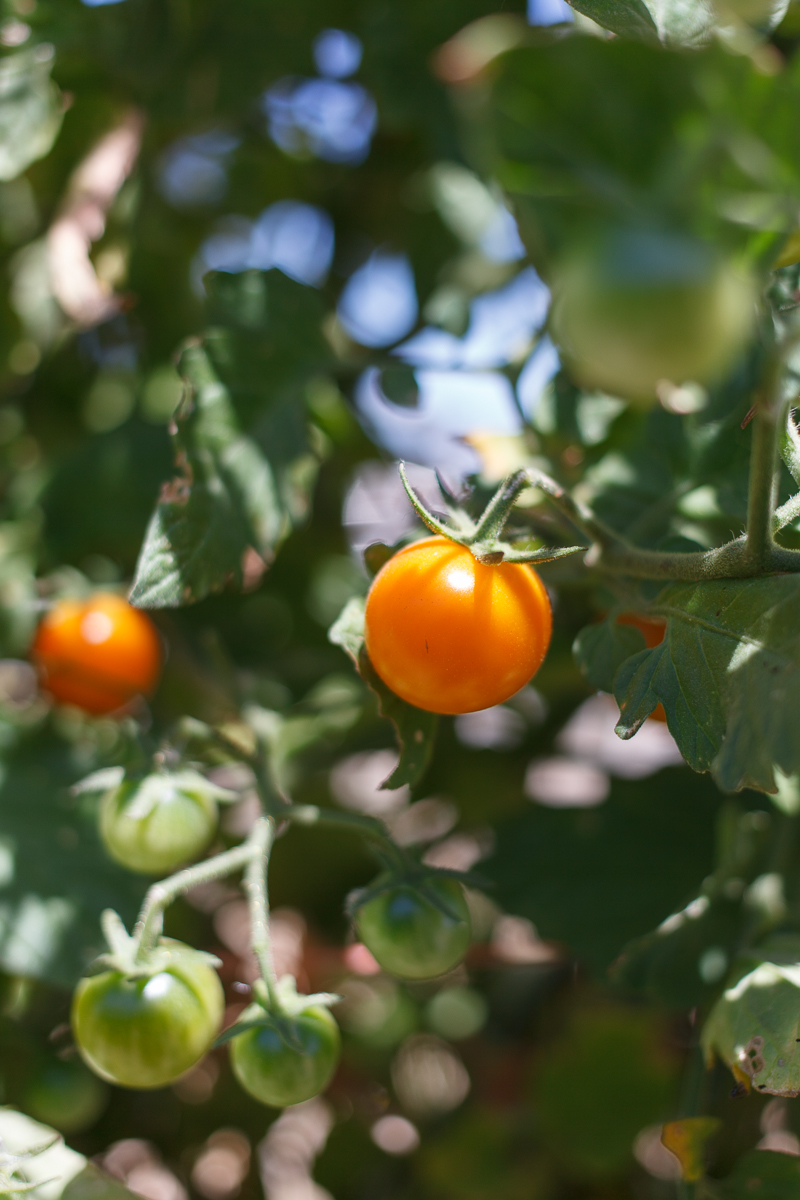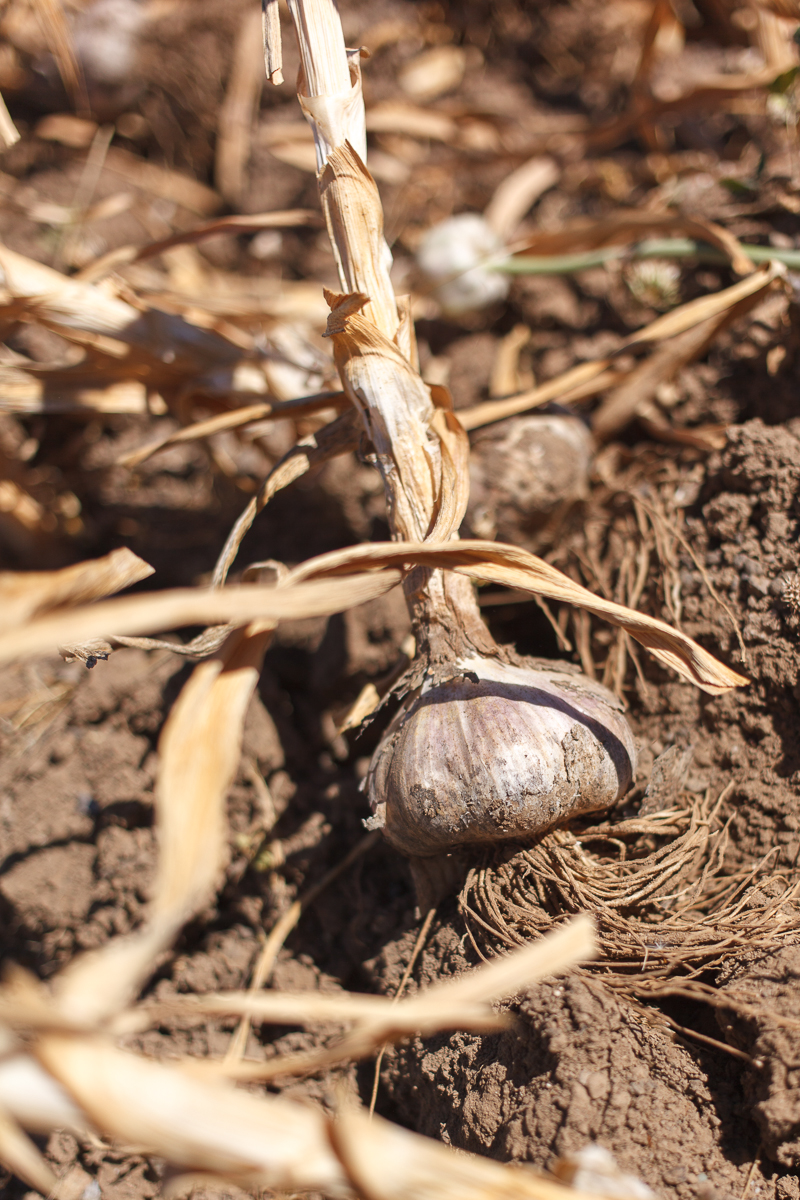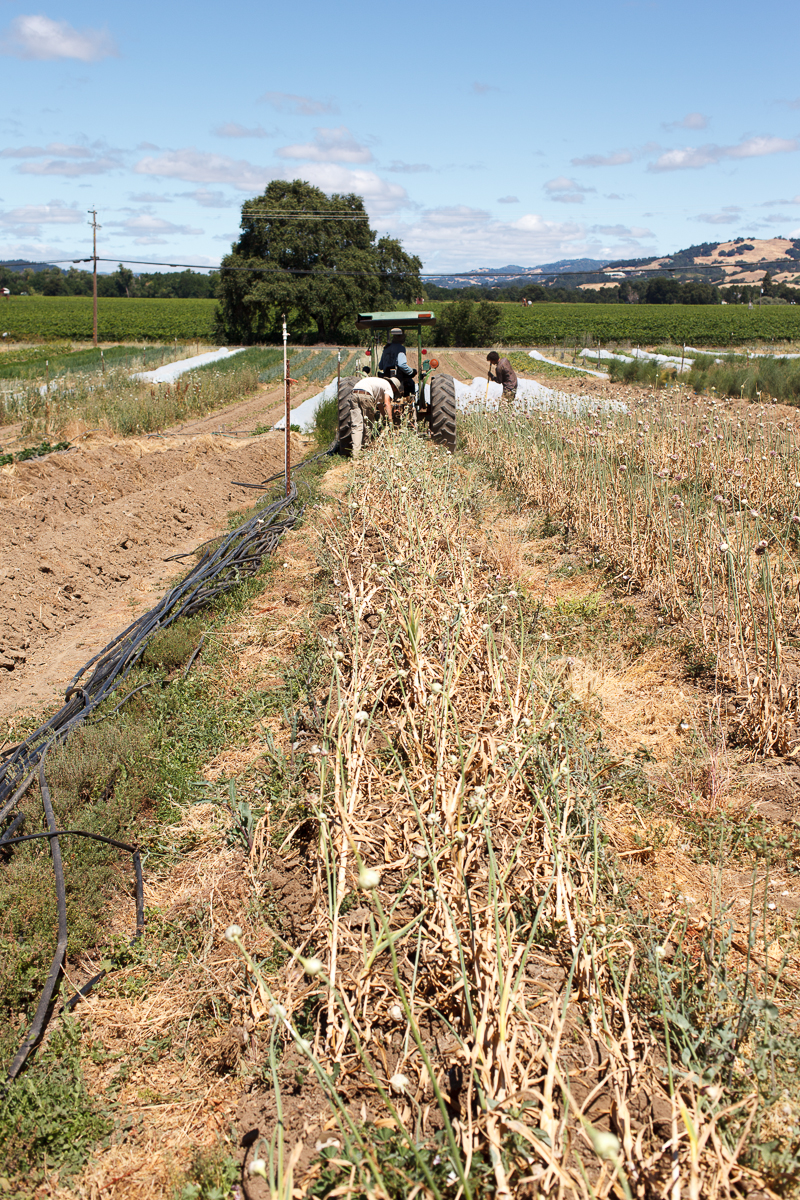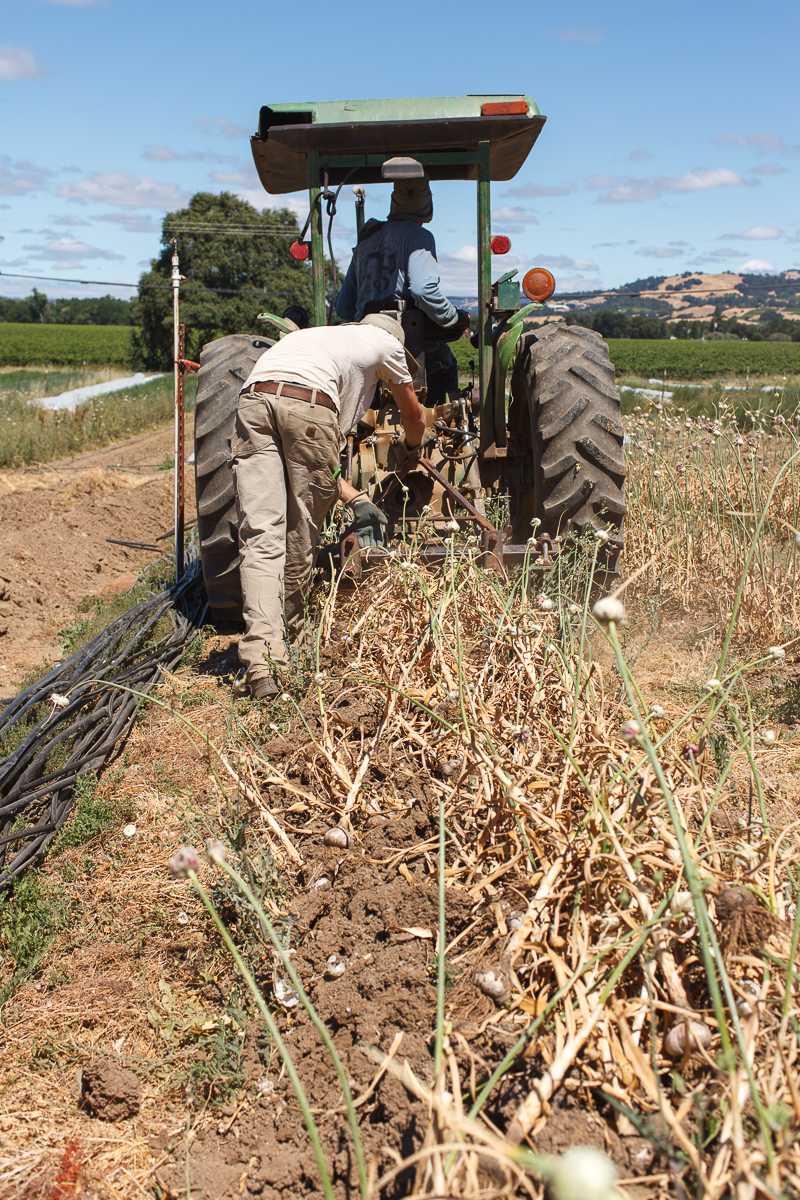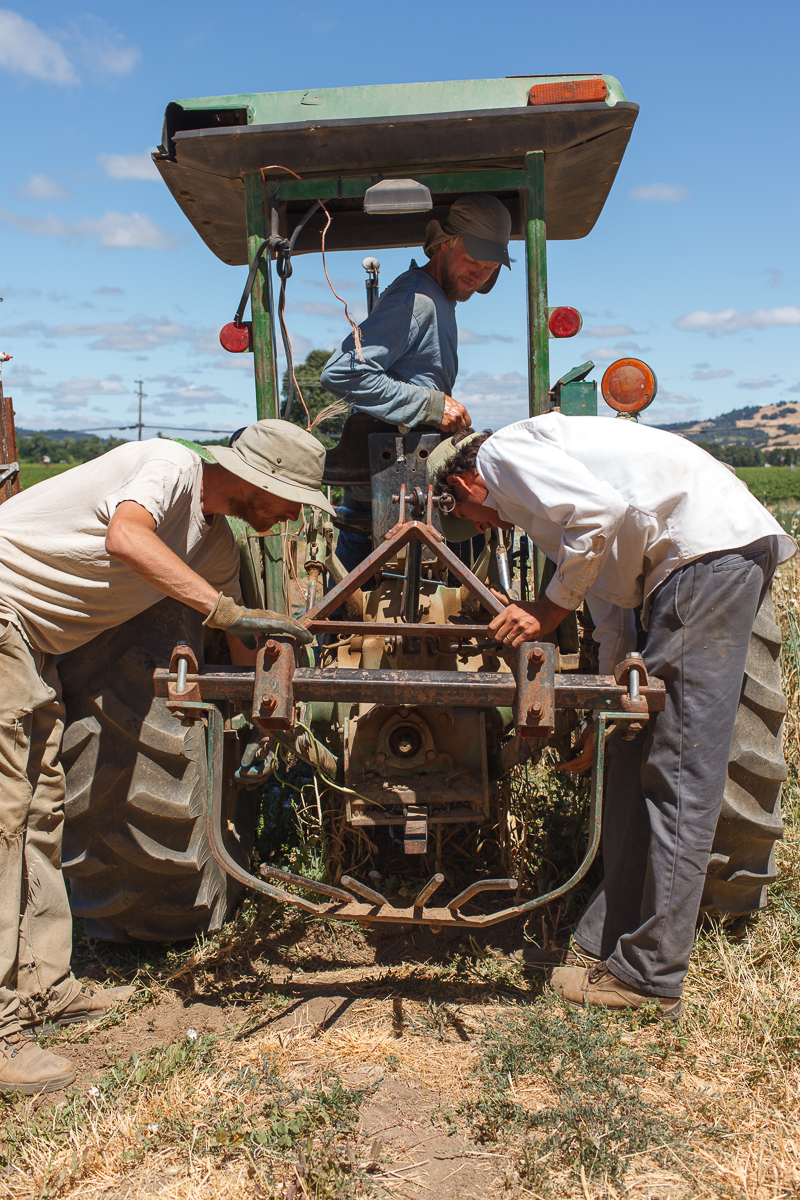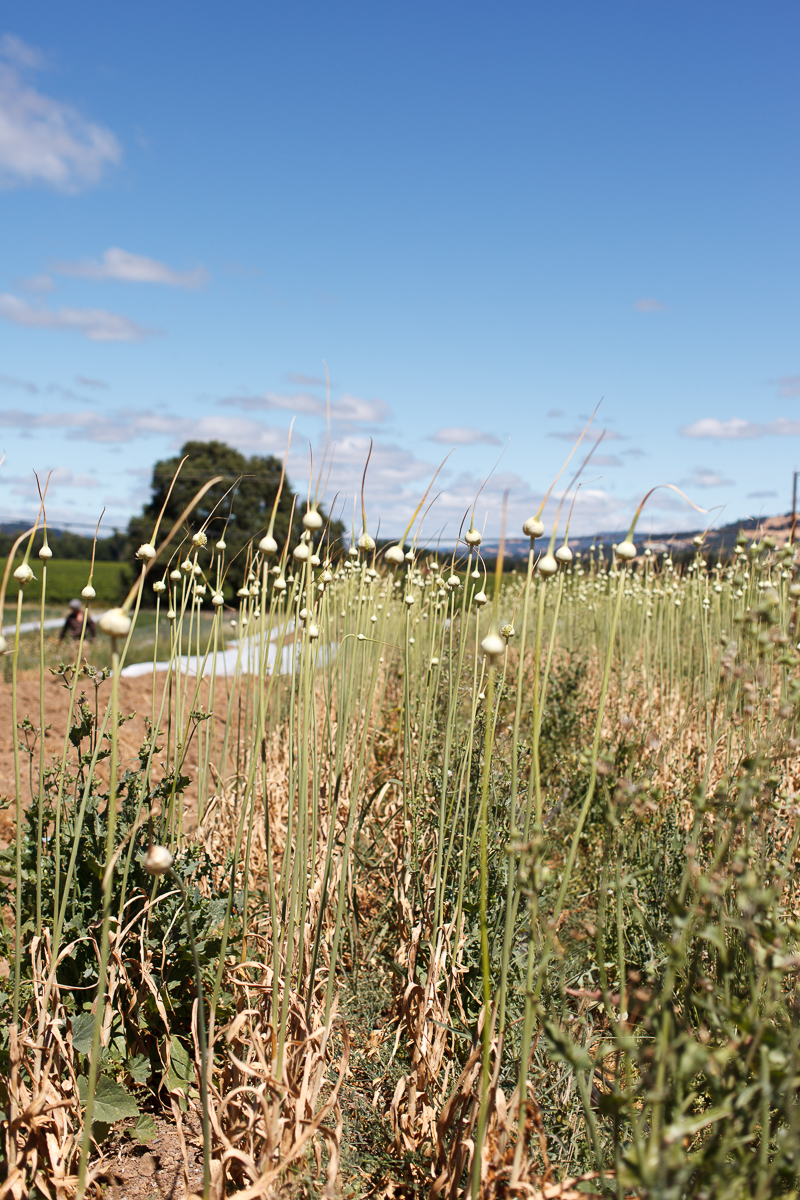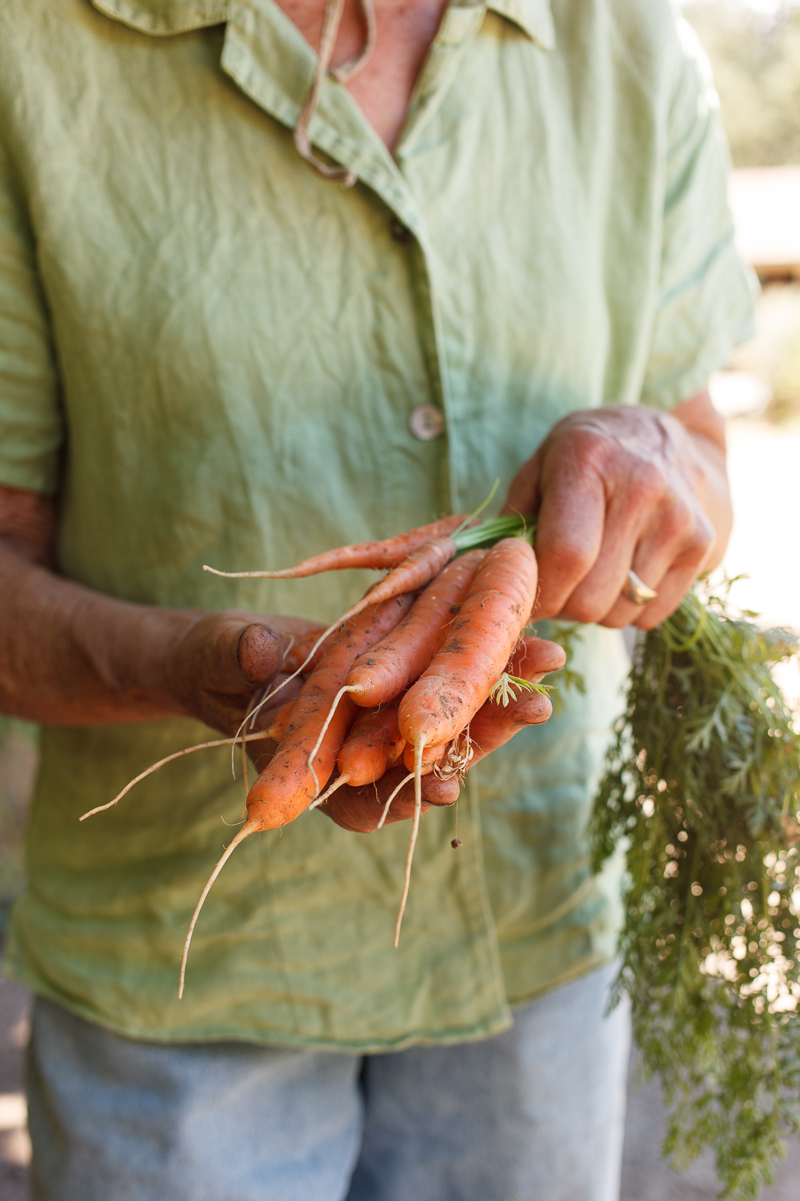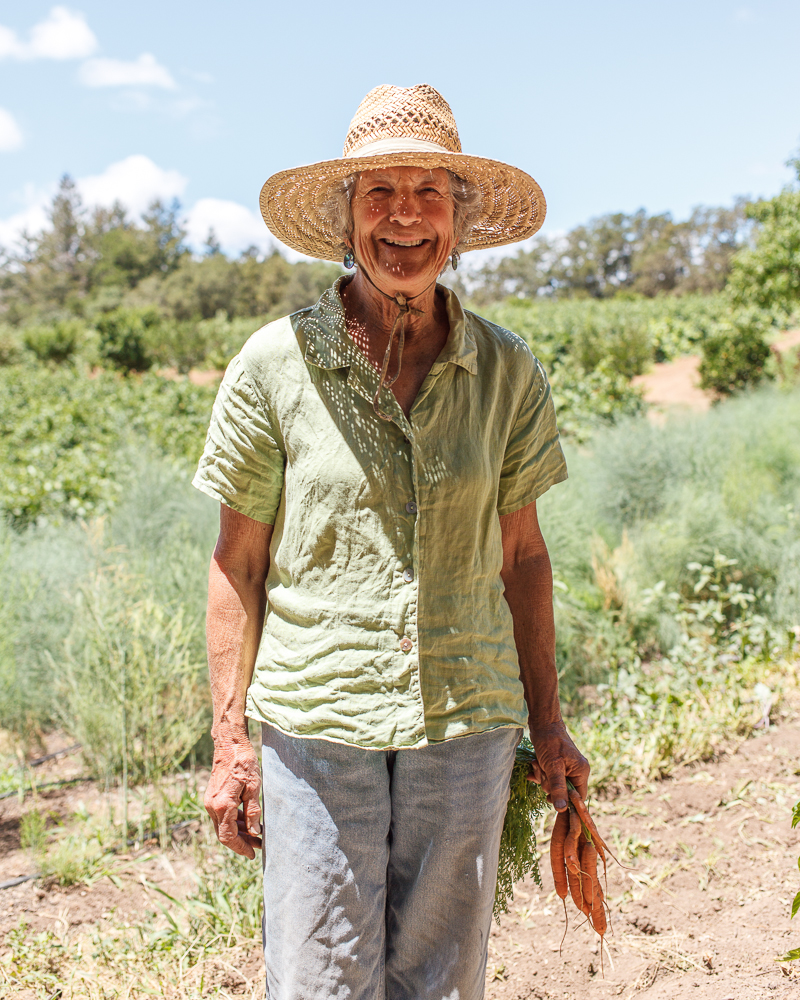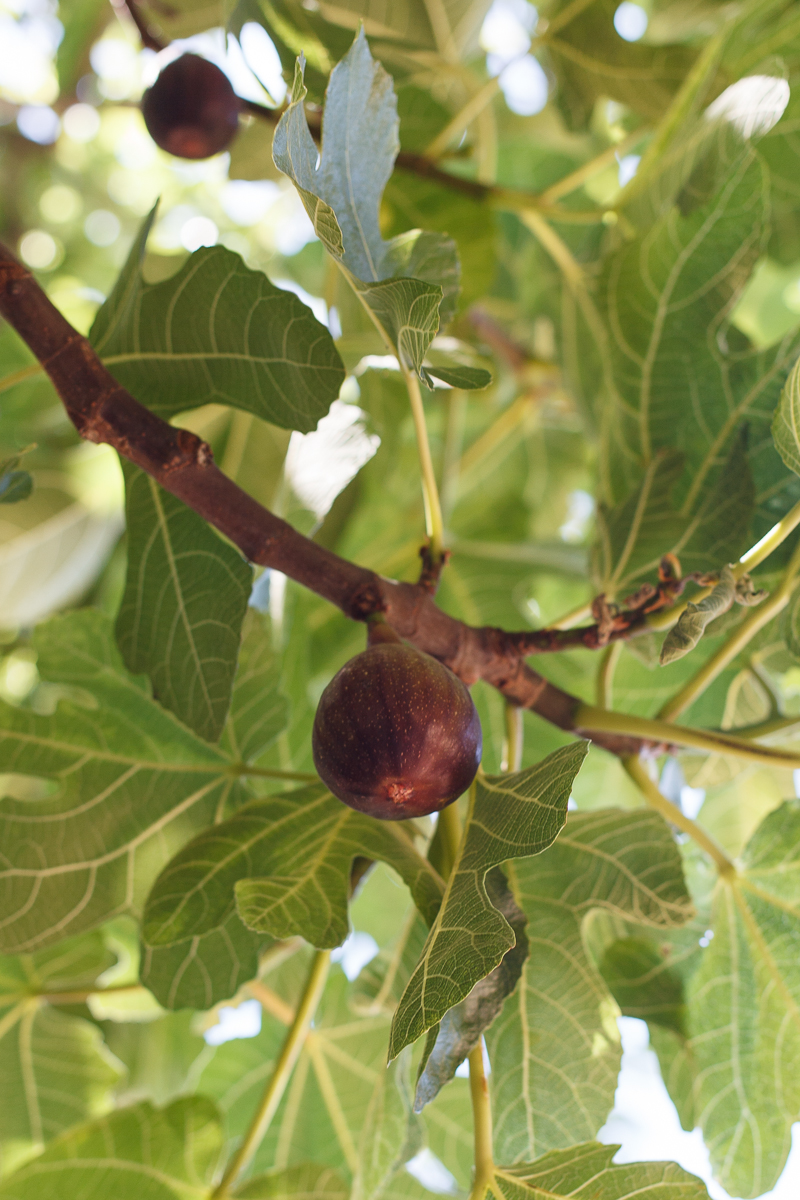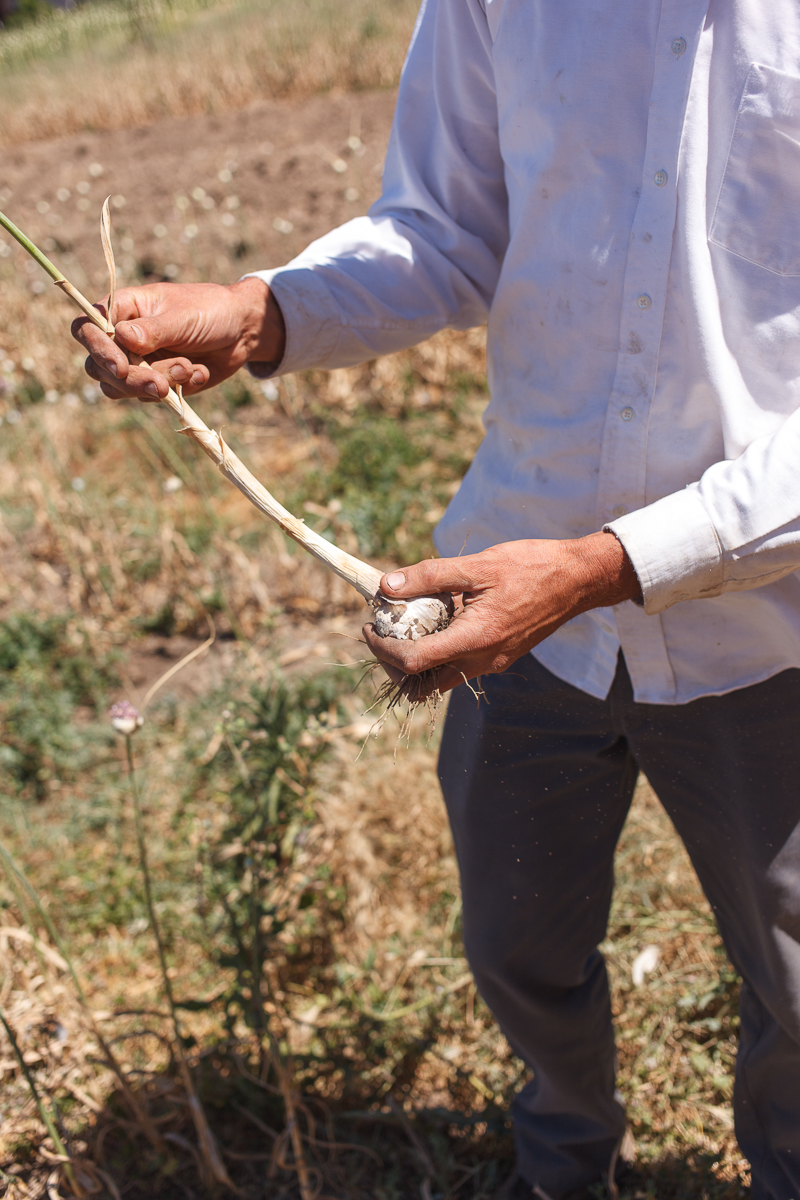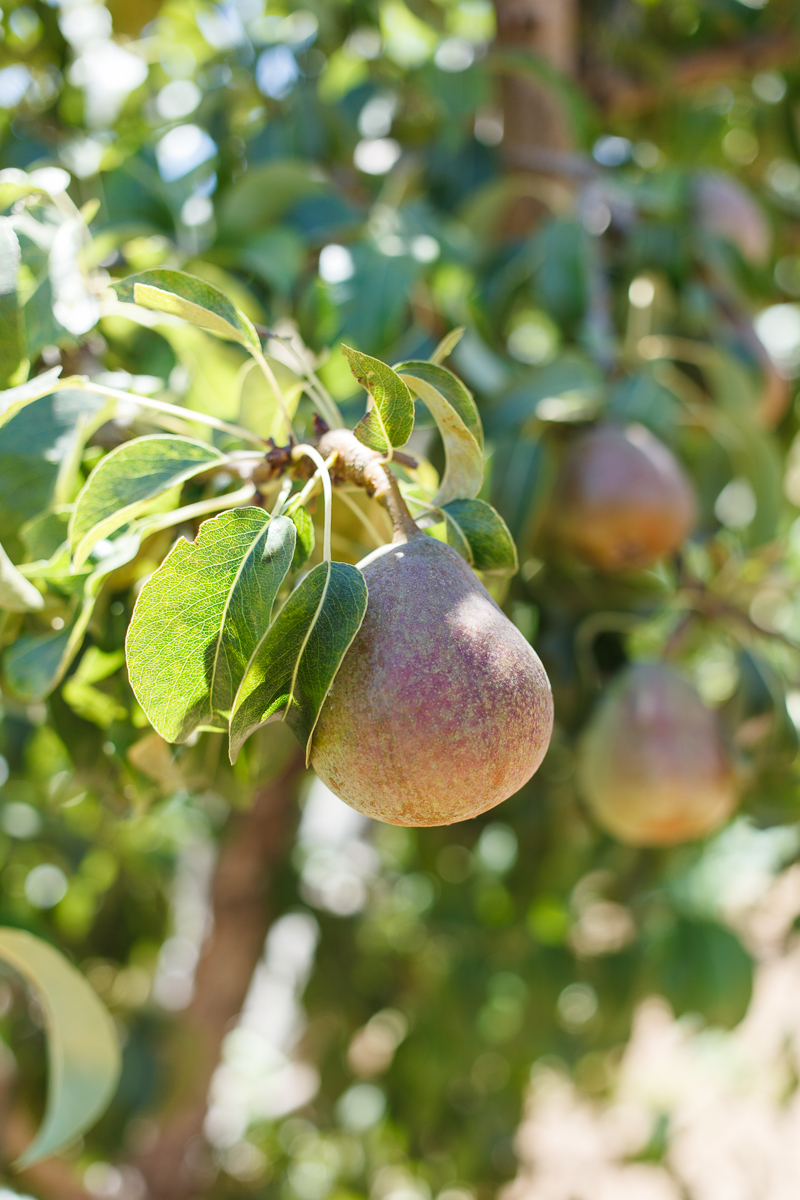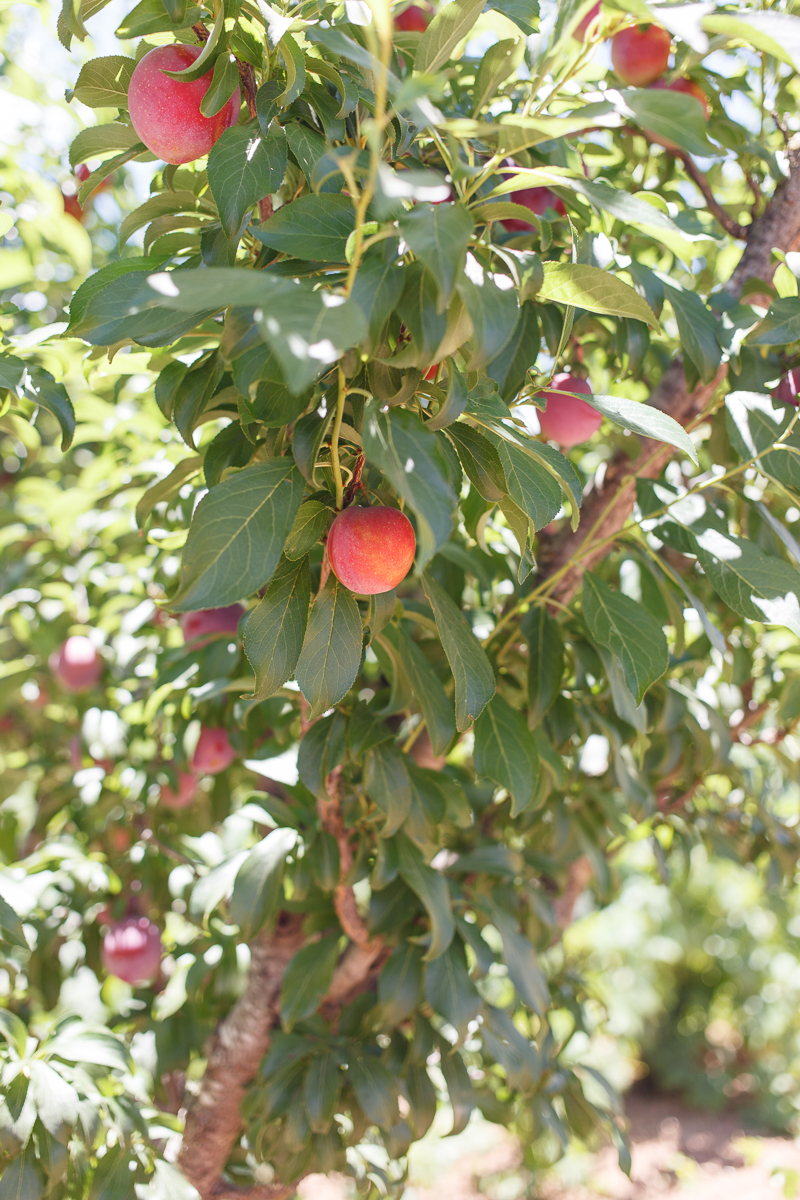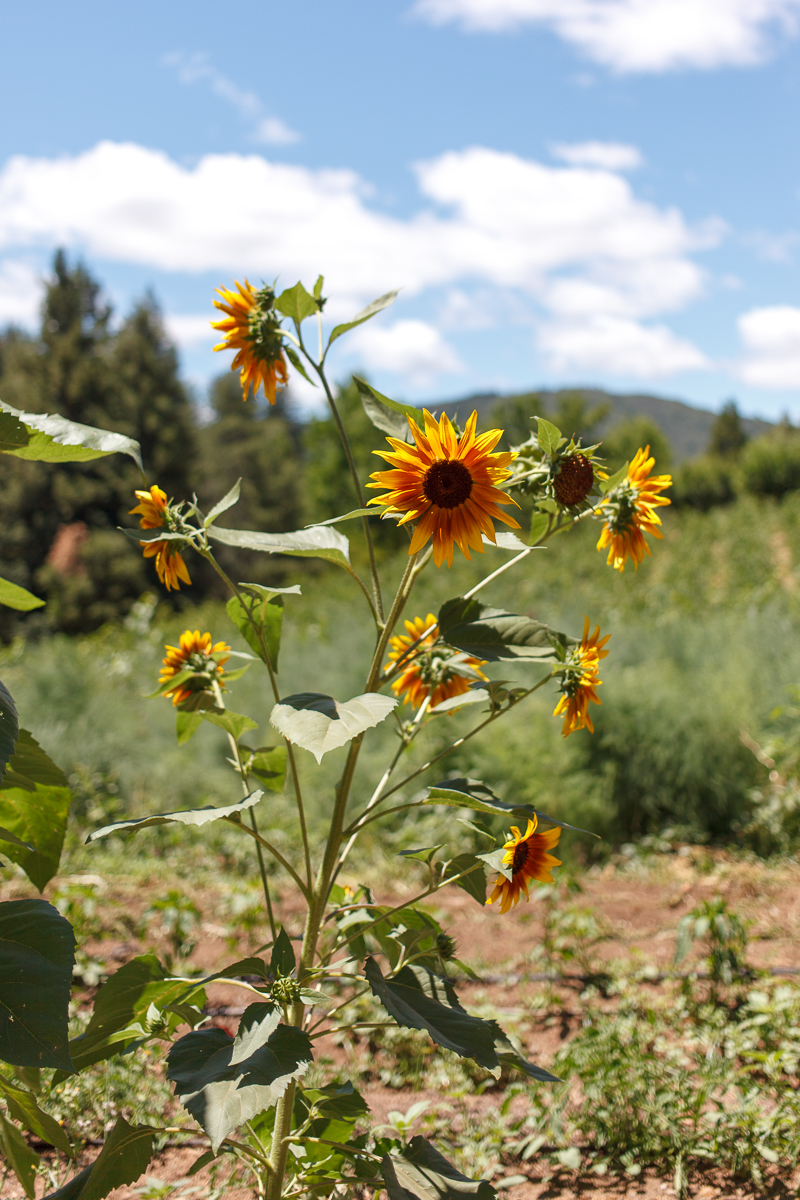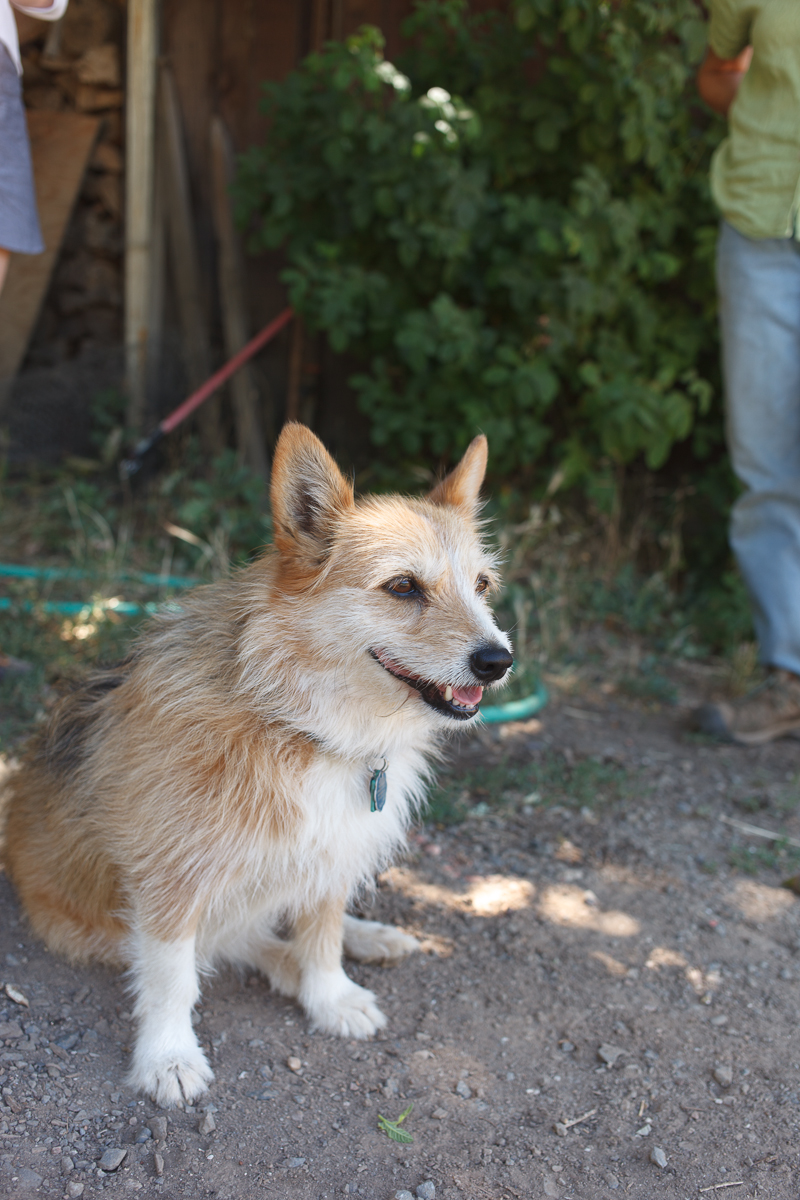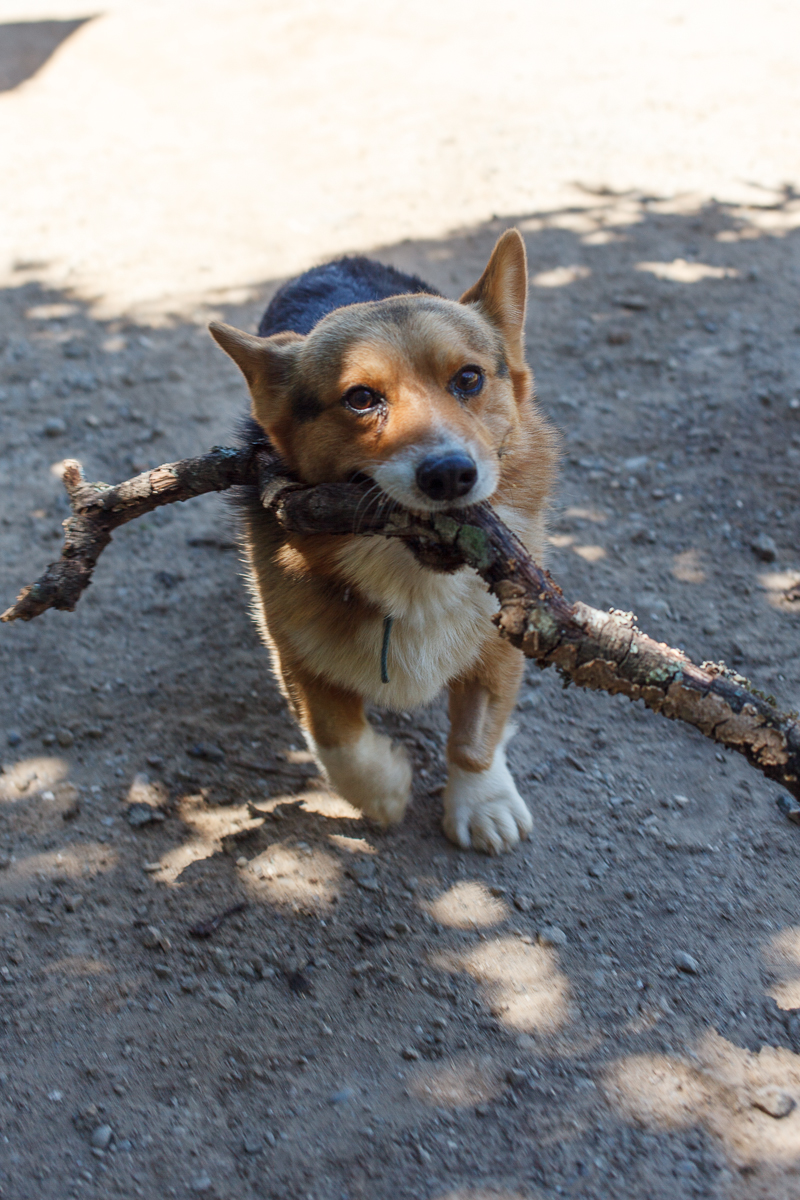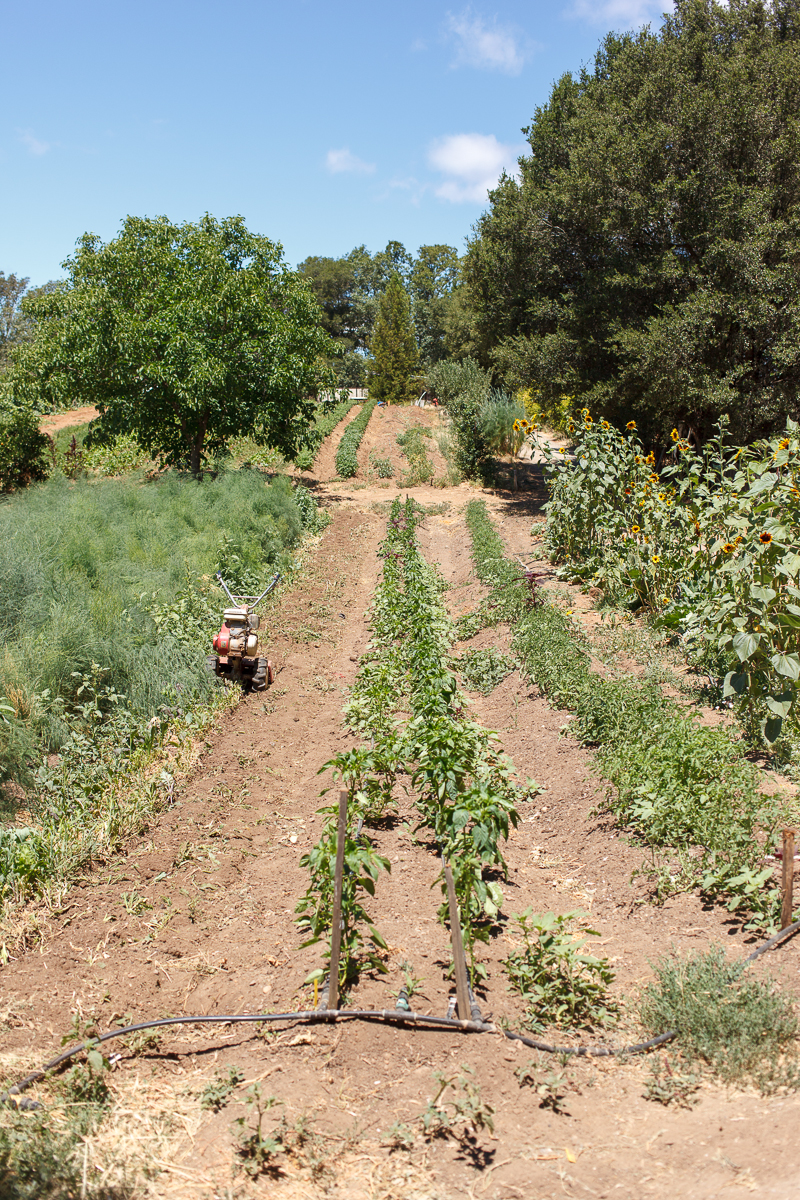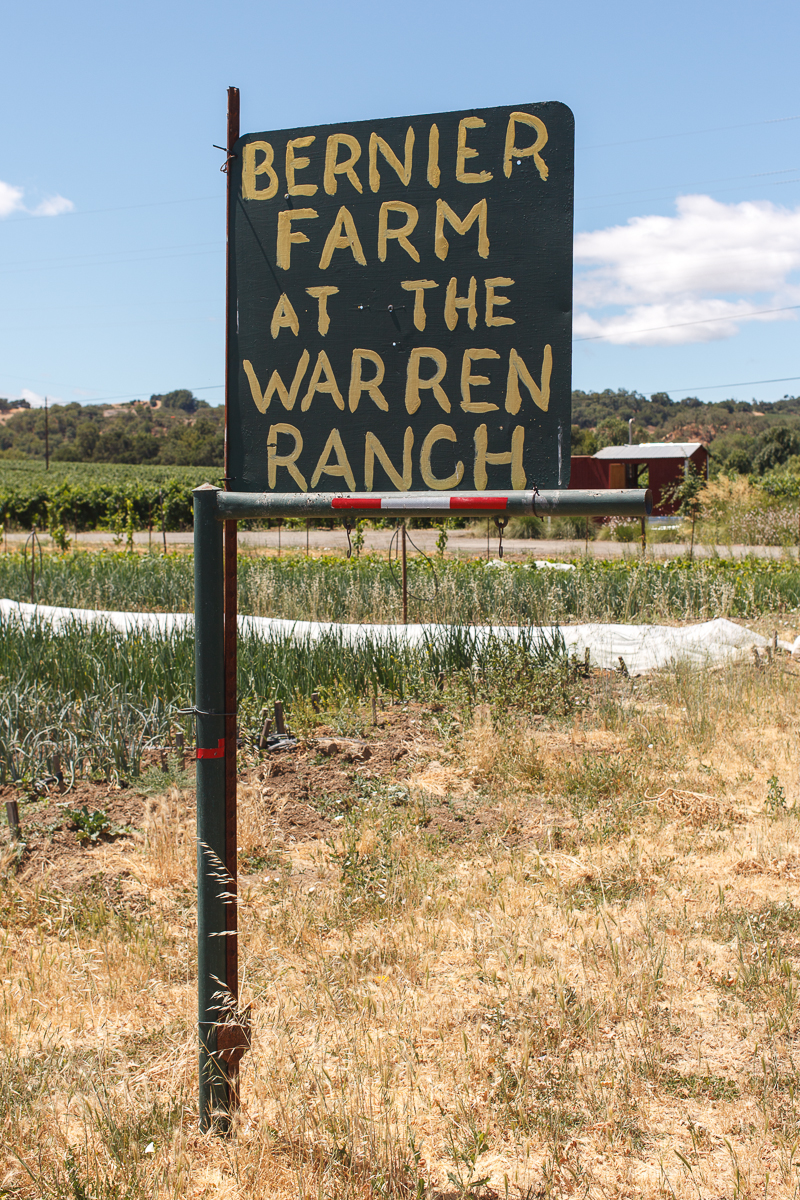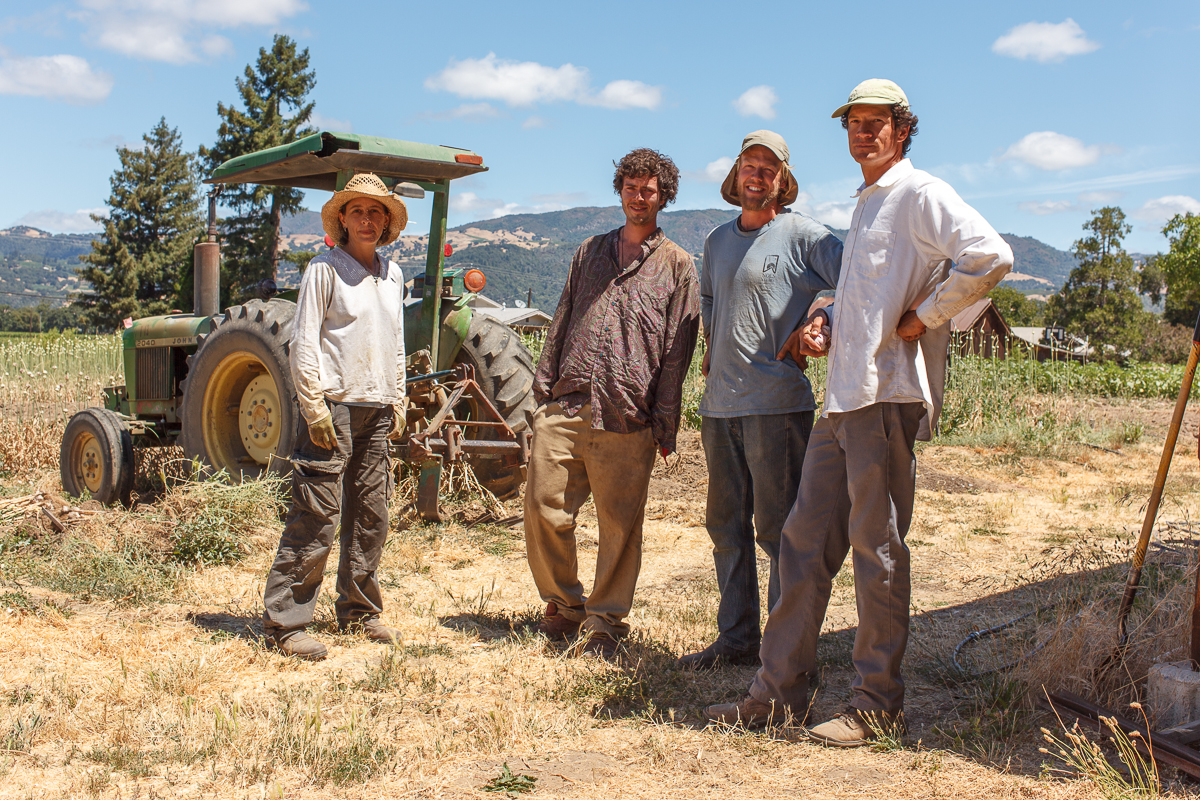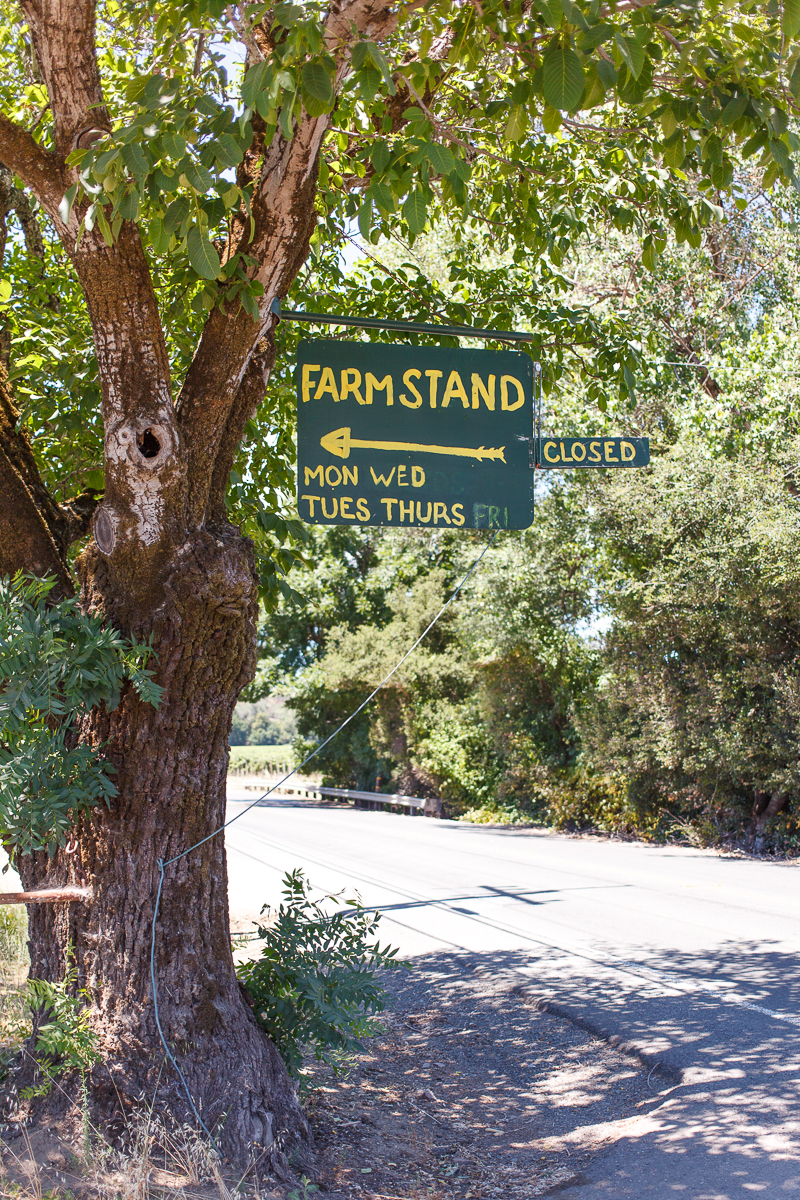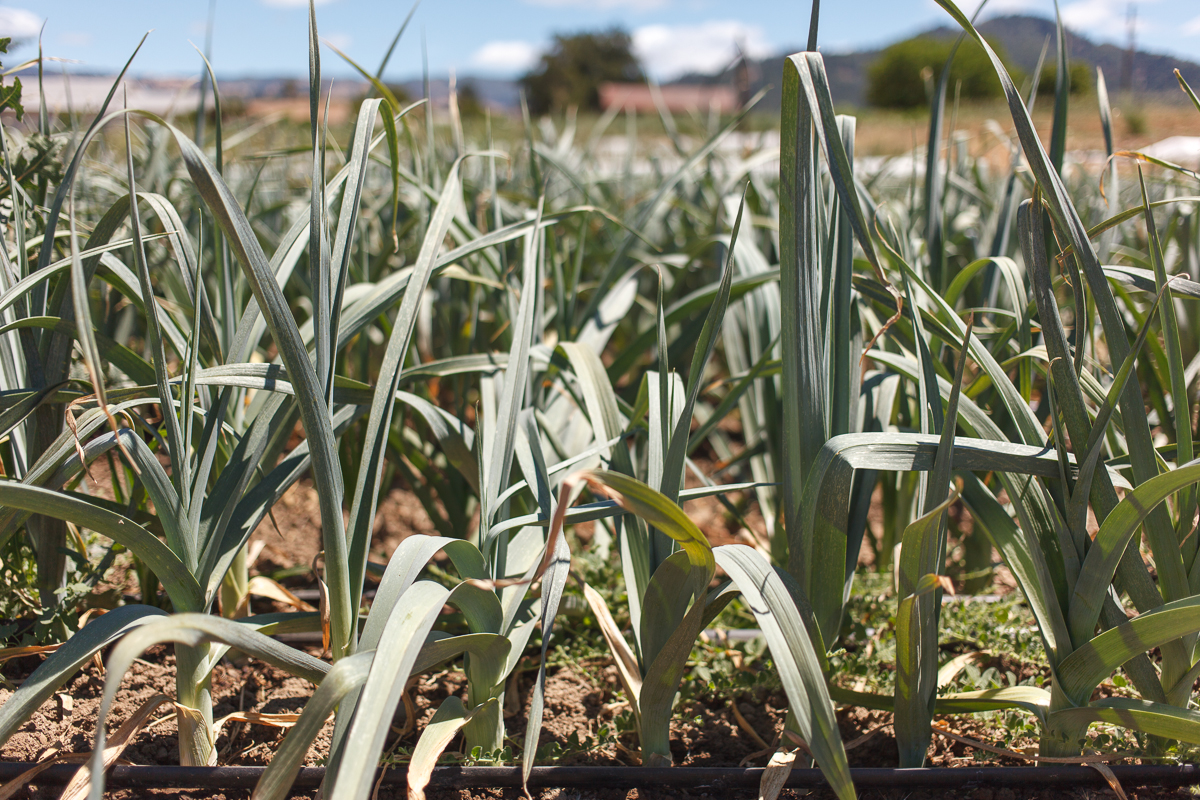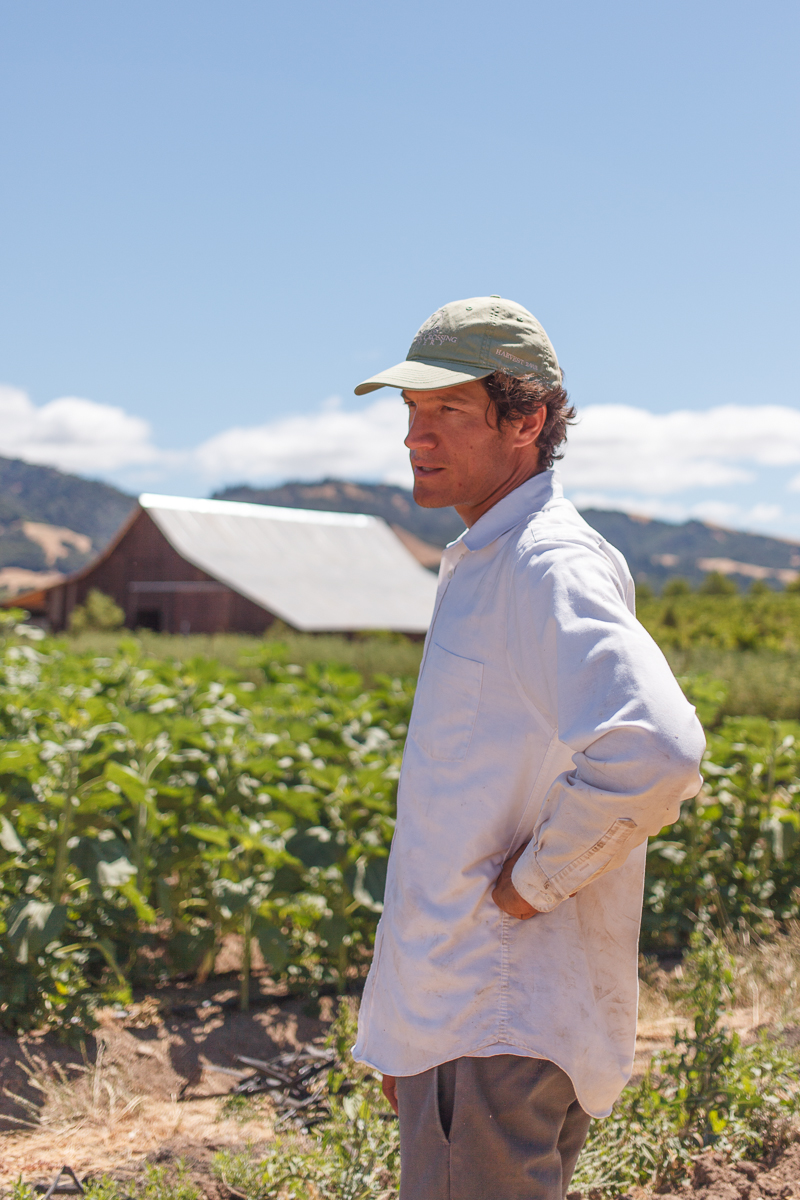Join us this season as we explore California’s celebrated wine country: the rustic ingredients, world-class destinations and passionate artisans, chef and producers who bring it to life.
Zureal, his mother Yael, and their family own and operate Bernier Farms, a small, sustainable farm just north of Healdsburg. They specialize in growing fruits and vegetables — particularly garlic! — for local farmers’ markets and restaurants.
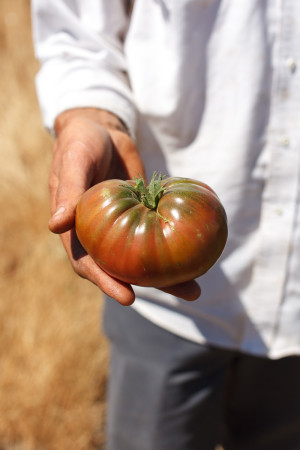 What is your background? Have you always been involved in farming?
What is your background? Have you always been involved in farming?
I was born (yes, a home birth) and raised on the farm that I currently live on. Growing up, my siblings and I were always assigned outside chores like feeding the chickens and collecting the eggs. We also fed goats, lambs and occasionally a pig that we raised for meat. On the vineyards that my parents sharecropped, my brother and I spent many hours during our summers attending to various needs: pulling noxious weeds, moving and setting aluminum irrigation pipe, training grapevines up the stake. Also, tractor driving as we got older. I have always been involved, except for years that I have spent away at school or traveling.
Bernier Farms is made up of several different locations; can you describe the setup of your farms?
Our family owns five acres, which we have planted to vineyards (zinfandel, petite sirah), orchards (peaches, plums, pears, apples, pomegranates) and vegetables. Five acres is not enough land to support a family, so my father and I sharecrop another 35 acres of vineyards (mostly zinfandel) and we lease four more acres for planting vegetables and two more acres where we are establishing an orchard. The grapevines exist on seven different ranches, and the vegetables on two others, besides our home farm. The distance between the farms that are furthest apart is no more than 10 miles from end to end, and the rest fall scattered through the middle. The ranches that we are farming are all in Dry Creek Valley and Alexander Valley.
What do your farms produce?
In the category of vegetables we produce a very wide variety, but our focus is on alliums. That is, garlic (14 varieties), onions, leeks and shallots. In the orchard we have mostly peaches, pears, plums and pomegranates. In the vineyards we have mostly zinfandel, some petite sirah, some carignane and a tiny bit of a couple of other varieties. Ninety-five percent of our vines are dry farmed.
Bernier Farms uses sustainable farming practices—can you explain what they are?
Well, we just became certified organic on three of our growing locations. We derive at least 98% of our fertility needs on all our farms from composts that my father makes and cover crops that we plant in the fall. Ninety-five percent of our vineyards are dry farmed, which requires zero irrigation outside of the winter rains. This means that we are not running a energy-consuming pumps and depleting the ground water on a drought year, or any year for that matter. Those are a few points.
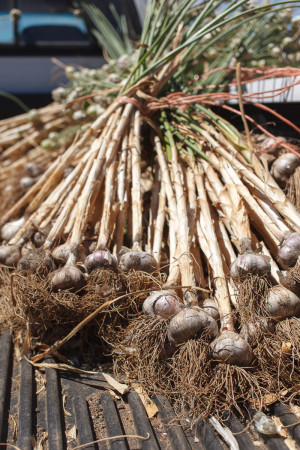 Describe your typical work day at the farm.
Describe your typical work day at the farm.
It changes through the year, but right now this is how it goes: Wake up early, pick and pack vegetables for restaurant orders (we are taking orders five days per week, minimum) or farmers’ markets. Maintain the farms, which could include preparing ground for planting our continuous plantings; seeding in the greenhouse; hand weeding; tractor cultivation; direct seeding into beds; or transplanting from our greenhouse. Irrigation — vegetables require irrigation frequently during the summer, especially in our hot and dry climate. Check around the vineyards for mildew outbreaks. Check in on the vineyard crew, who are opening the canopy of the vines.
What is your farming and food philosophy?
Farm sustainably, produce quantity, feed community and family, and eat whole foods prepared with love or raw.
Where do you sell your produce?
Local restaurants, bakeries and general stores in Geyserville, Healdsburg and Santa Rosa. Farmers’ markets in Cloverdale, Healdsburg and Santa Rosa. Through our farm stand located on our main vegetable production site in Alexander Valley. Our seed garlic is sold through our website online and at Harmony Farm Supply in Sebastopol. We also sell at Shelton’s, which is a natural food store in Healdsburg.
What is your favorite growing season?
I love the fall and spring for the produce that is coming in during that time, but also for the weather that we have during those times. As a farmer, my work day occurs almost entirely outside. The heat waves of summer are something we have to accept, as well as the rainy days during the winter. Tasks must be completed no matter the weather we are having.
Tell us about your relationships with chefs and restaurants. Which restaurants use Bernier Farms produce?
My mother is the main contact for the restaurant outlet. Some chefs we have been working with for six years plus, and some chefs we are courting for the first time this season. The personal relationship is important. Otherwise, the restaurant may as well be buying from a distributor with no knowledge of who, where or how it was produced. Starting from our northernmost customers we have Catelli’s, Diavola, Dry Creek General Store, Wild Sage Deli, Shelton’s, Shed, Campo Fina, Scopa, Downtown Bakery, Dry Creek Kitchen, D.L. Catering, Mateo’s — we’re just getting going with Spoonbar this season — and Bishop’s Ranch and Spinster Sisters.
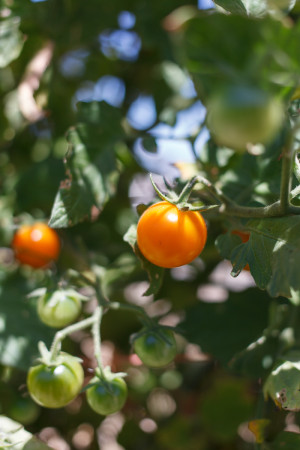 How do you work with the chefs?
How do you work with the chefs?
We supply a list of what is available at what price every week. The restaurant calls or emails in the order the day before, and we fill the order and deliver the produce. Simple as that.
What is the best part about working on the farm? What are some of the biggest challenges?
The best is to see rows of plants through from seed to maturity and have a market for our final product. Farming is full of challenges, but one of the biggest is insect and pest pressure. There are a multitude of living creatures in the soil and in the air that will try to feed on your plants.
What are your future plans for the farm?
Not much change, just keep on producing high quality fruits and vegetables.
In your experience, what has been the hardest thing to grow? The easiest?
Every year there is a crop or two that throws us for a loop and another that comes in like clockwork. Farming is dynamic, and many factors contribute to the success of a crop, including factors like weather that one cannot control. For the labor needed, I would have to say that wine grapes are the easiest and vegetables are the hardest.
Do you cook with the produce you grow at the farm? What are you favorite things to cook?
Of course. My family and I eat it all. No favorites, but everything has to have garlic in it.
What’s for dinner tonight?
Well it is 7 a.m. right now and I have not even started to think about dinner for tonight, but I have vivid memories of our meal last night. My wife and I prepared a vegetarian lasagna with eggplant and sliced tomatoes, garlic, basil and parsley off the farm. Of course, it also had some very nice mozzarella and a bechamel sauce that tied the whole thing together. We also had a salad made from our lettuce, carrots and cucumbers.
How did you become interested in farming?
I am a native San Franciscan, however as a child I always wanted to be in the country rather than the city. When I was 10, my parents sent me to a farm in the Sacramento Valley instead of summer camp. I loved every minute of it, especially the harvesting and eating of veggies and fruits. The owners had a couple of cows too and we got to help milk and enjoy warm fresh milk in the kitchen as well. I think that farm experience I had when I was young steered me in the direction of farming.
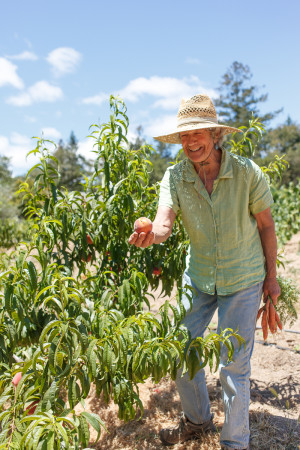 Tell us what it’s like to work with your family.
Tell us what it’s like to work with your family.
Working together as a family has its benefits and challenges. I wouldn’t trade it for anything. Farming with my husband when the children were young made it easier to share the responsibility of raising the children. That was mainly because we were our own bosses and we could be flexible with schedules. That flexibility has continued with the addition of Zureal as a partner. We can cover for him so that he can get away, and visa versa. I think we work well together. I know that it is great to have a younger generation look at the business with different ideas and creative solutions to changing old ways. That can be challenging as well because one gets comfortable doing things the way they have always been done. Another words resisting change even though it might be good.
Can you describe the different roles you all have on the farm?
We do have different roles and quite a bit of overlap. I am in charge of marketing, which means that I am responsible for connecting to the restaurants and caterers. I take the orders and communicate to the farm crew our harvest of the day. Zureal is the general manager (oversees the vineyards and the vegetable operation, and my husband is chief engineer (creating tools that make the farm more efficient and fixing them when they need repair). And we all do the work, along with our employees, that help us produce good fruit and veggies.
How has the farm expanded since you began the first family farm?
Our expansion has been slow and steady, until about five years ago, when we rented the Alexander Valley farm location and started to develop that acreage to meet the increasing demands of the local restaurants for locally and sustainably farmed produce. At that time, we took a funky old vineyard and removed 4 acres of grapes and, after adding tons of compost, began to develop our main veggie operation. We also used one of those 4 acres to plant an orchard with peaches, plums and pears.
You grow 12 different types of garlic. Can you talk about the subtleties between the varieties?
They are subtley different in terms of their flavors, but all are characteristically nice flavored garlic. Italian Red Rocambole is the best of the garlics I grow. It is the most popular because of its sweetness (high sugar content), richness, and complexity. It has an easy peel and is pretty to look at. Spanish Roja is an heirloom rocambole that has a wonderful clove size and nice amount of spice. China Stripe is another early garlic It is an early garlic that is creamy rich when roasted as a fresh spring garlic. Asian Tempest is the spiciest of all the garlic varieties that I grow. It has large cloves and is fairly early season garlic. Siberian is a mid to late season garlic that has a nice richness and health benefits as well. It has a very high allicin content which studies have shown supports normal cholesterol levels, boosts the immune system and enhances circulation. Northern Italian Red is the garlic I began growing in the 70’s after a neighbor gave me 10 heads to plant in the Fall. It has always done well for me and it has a nice sweet spicy balanced flavor. It keeps well for at least 8 months. Silverskin is my braiding garlic that lasts 10 months from the time of harvest. It has good flavor and can be used long after the other varieties have started sprouting. Spanish Benitee originated in Andalucia and is a delicious and rich creole type garlic. I like Spanish Benitee raw because it is mild and not too hot on the tongue. Rather, it leaves a mild warmth in the mouth. Rose du Lautrec is a French Creole variety that I brought to California from Southern France. It is pungent and sweet and commonly used in garlic soup. The flavor is complex and adds depth to dishes with only a small quantity added as an ingredient. Chesnok Red has a pleasant assertive flavor and large clove size. It holds its shape well when baked and the sweetness of the garlic is a delight. This is my favorite garlic to use when making aioli. Romanian Red is hot and pungent and has a pleasant long lasting spicyness along with it’s characteristic sweetness. It stores well. German Porcelain is lovely when it produces a large head. It is a good garlic to slice into dishes, rather than squeeze or chop. It has an earthy heat.
Meet more chefs, artisans and producers in our guide to wine country.

